
Love Exploring
Alcatraz: the secrets and mysteries of America’s infamous island prison
Posted: December 12, 2023 | Last updated: January 23, 2024
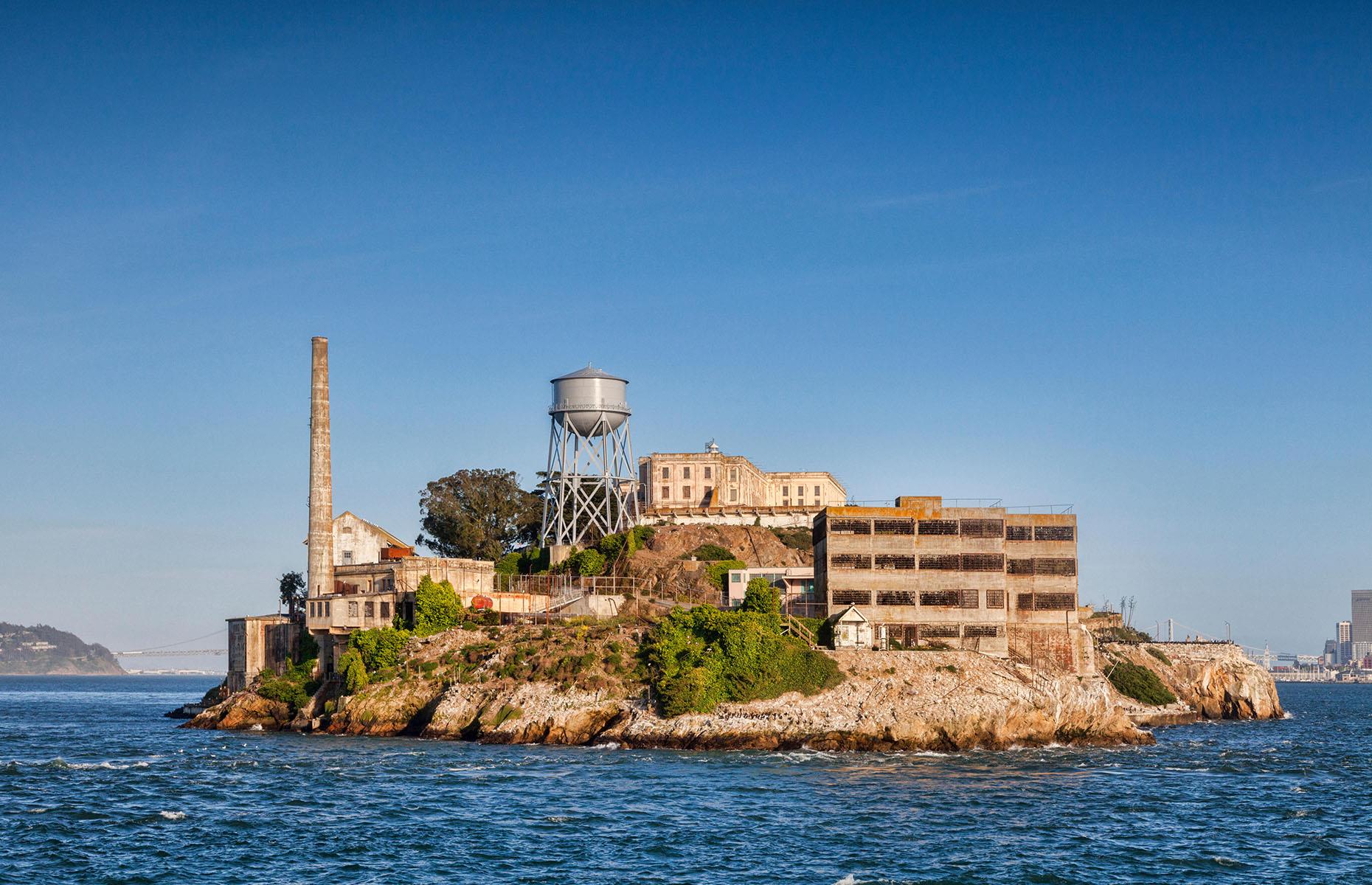
Tales from the Rock
Spending decades as America's most formidable prison – and now serving as a mysterious tourist attraction – Alcatraz has captured popular imagination for more than a century. But how much do you know about its chequered history?
Click through this gallery to learn the site's mysterious story, from its origins as a military fort, through its time housing America's most dangerous criminals, to its modern-day status as one of the country's most beguiling abandoned places...
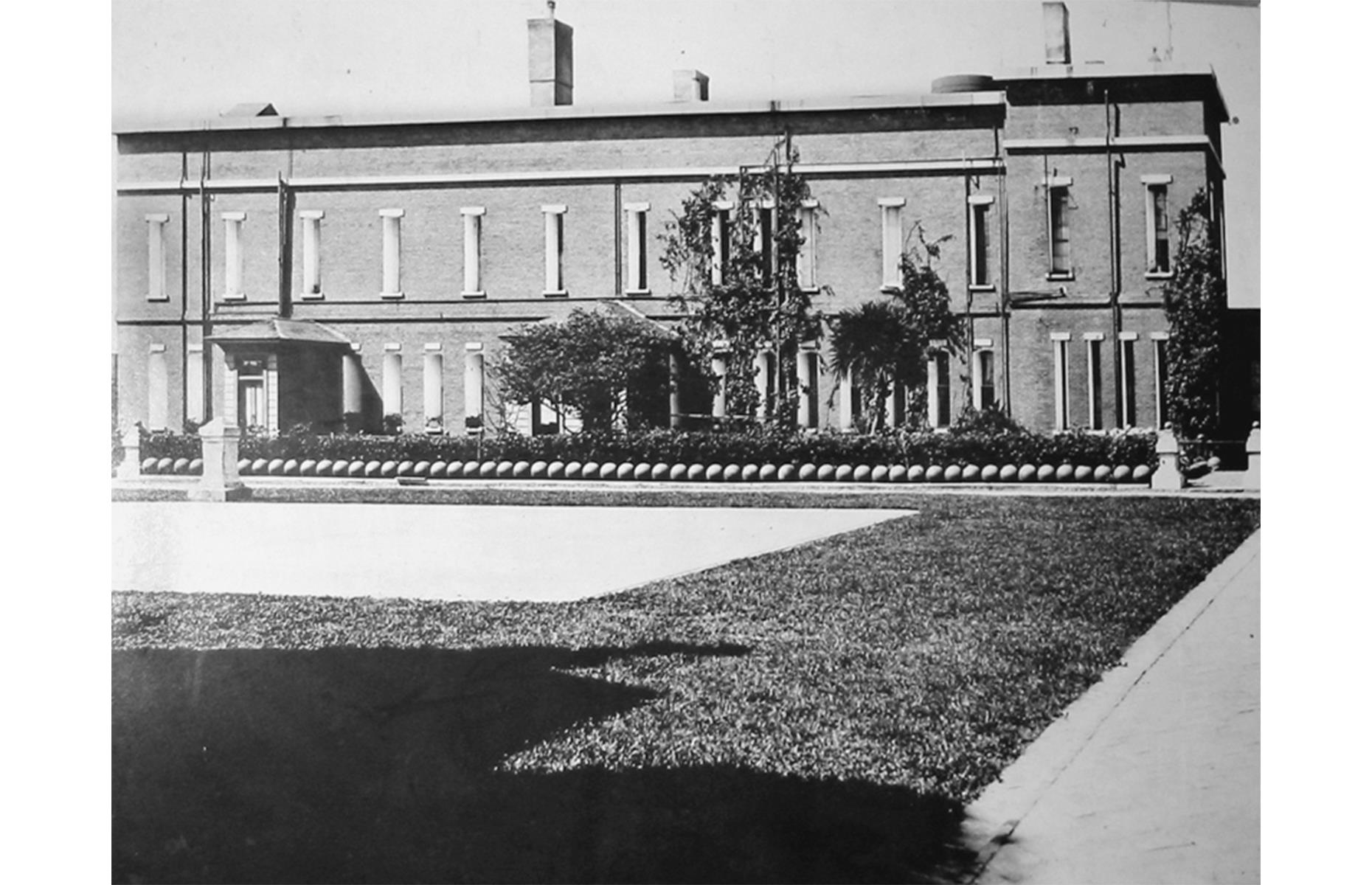
Alcatraz Island begins life as a military fort
Before Alcatraz Island became the location of a high-security prison, it was under military control and home to what the National Parks Service calls "the most powerful fort west of the Mississippi River". From 1854, the army began rigging the isle with more than a hundred cannons, intended as a defence against invaders trying to enter San Francisco Bay.
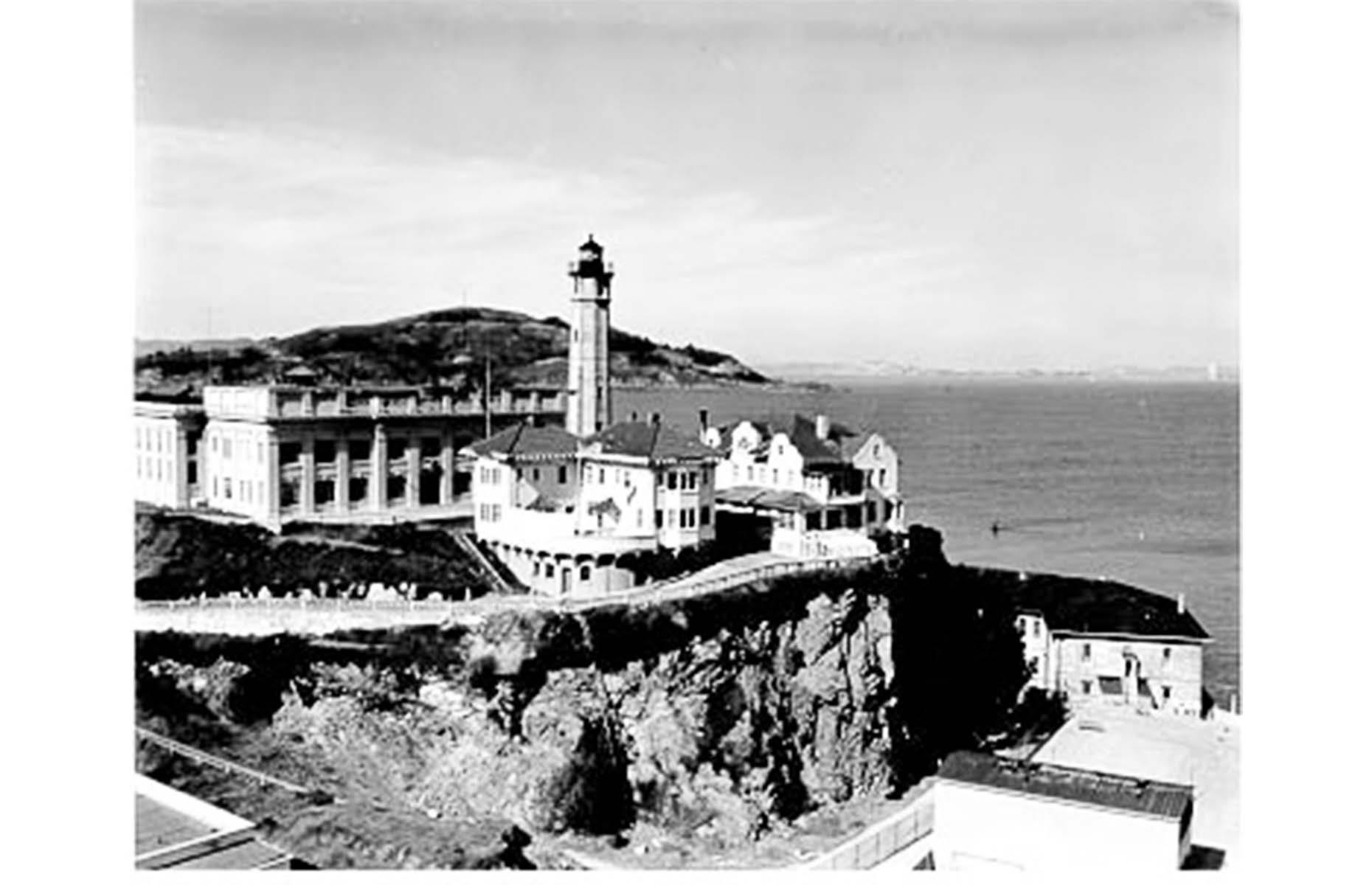
The island becomes home to the first lighthouse on the West Coast
During the island's early days, it also served as a beacon. In fact, it became the very first lighthouse to illuminate America's west coast when it was finished in 1854. It's been through several iterations since, including the modern, automated structure added after the jail was closed in the 1960s. The lighthouse still shines brightly today.
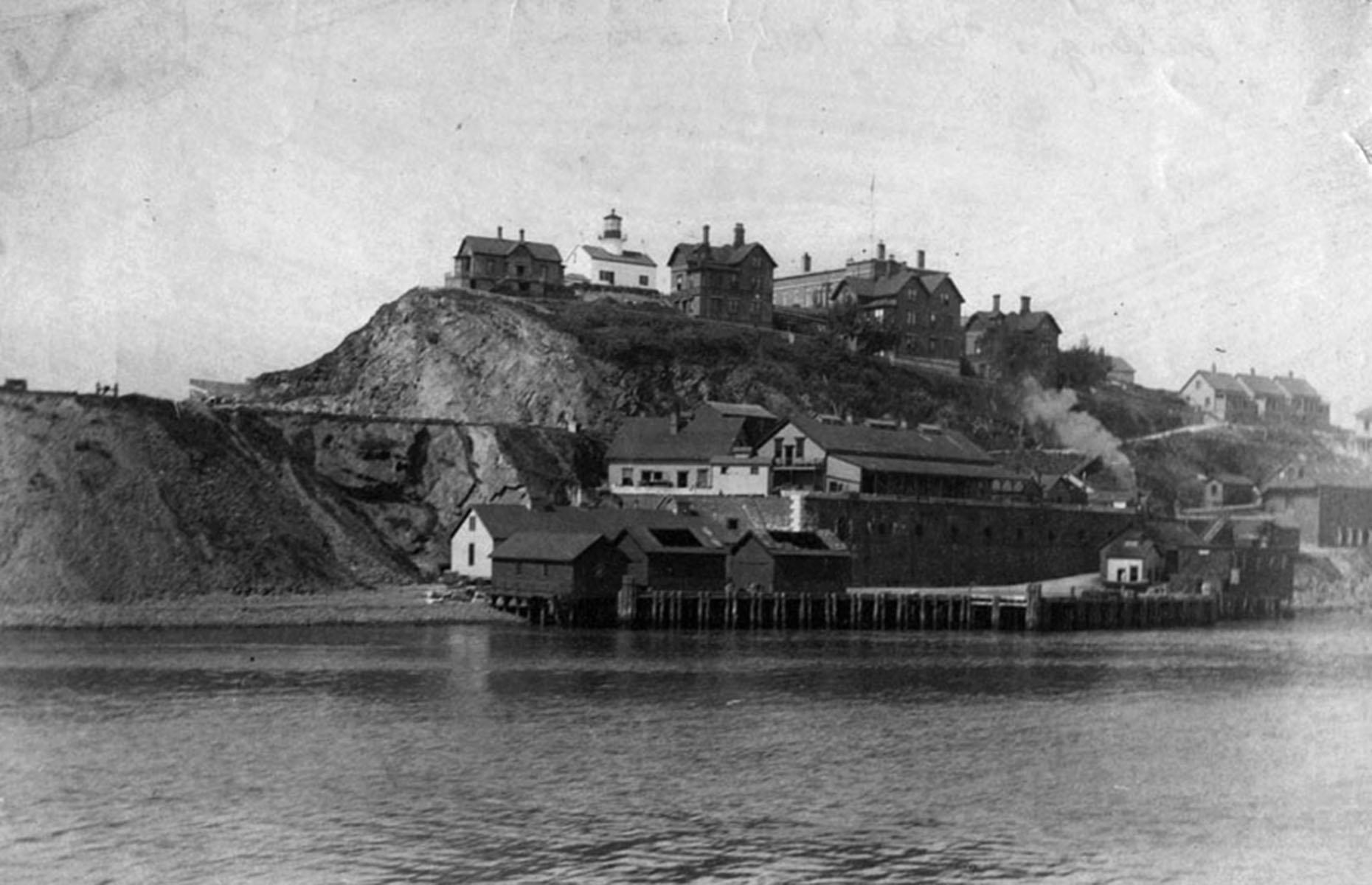
The island is first used as a prison in 1859
Decades before the isle was converted into a federal penitentiary it contained a military-controlled prison, which began operations when the fort was finished in 1859. The site slowly expanded so that the buildings could hold hundreds of army prisoners, typically in cramped and cold conditions. It was considered suitable because the strong, ice-cold currents around the island were thought to make escape impossible.
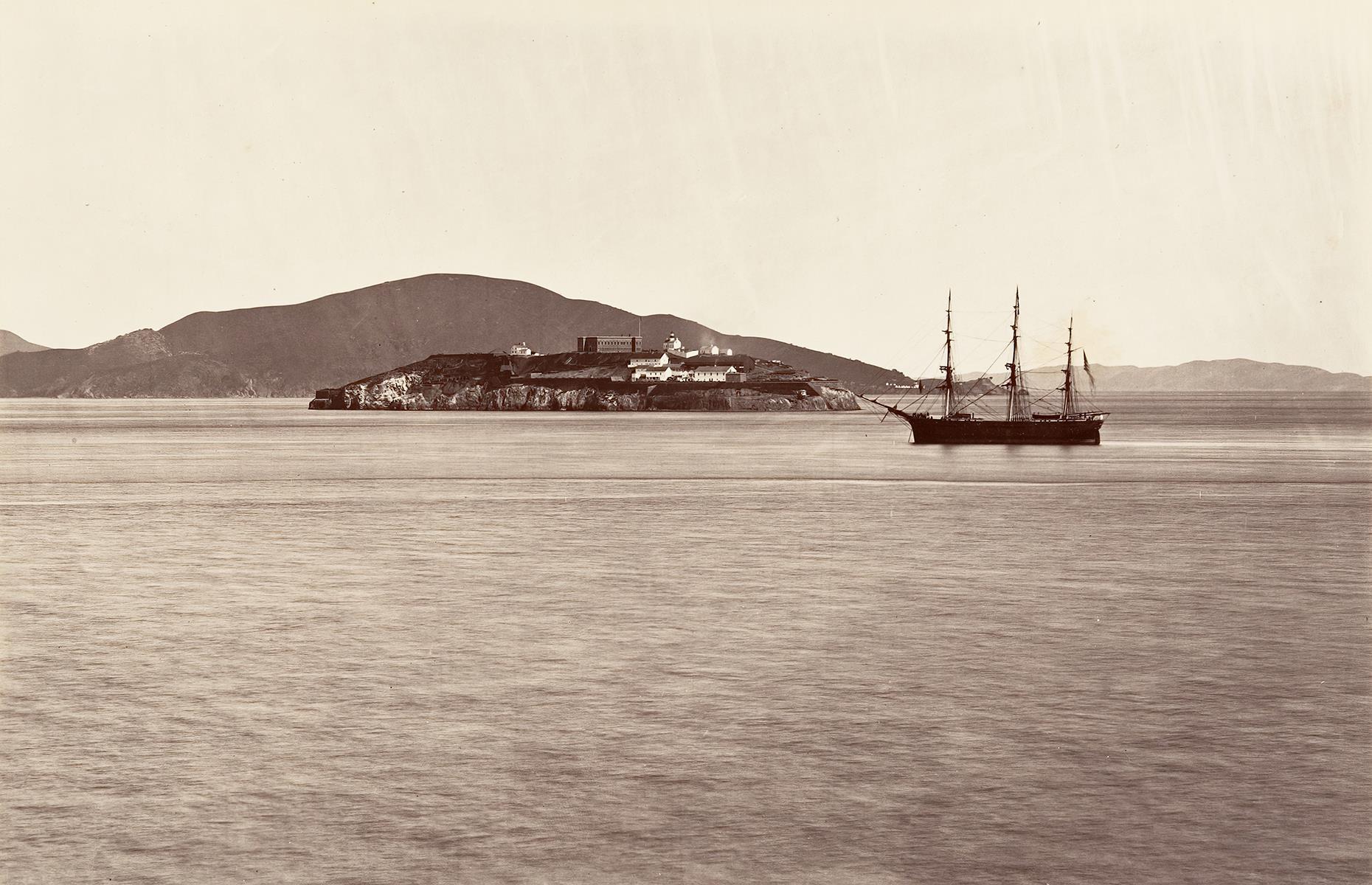
Alcatraz Island sees action during the Civil War
During the American Civil War, Alcatraz defended the Union state of California from potential attack by Confederate forces, and the prison held local civilians arrested for treason. As the war wore on and Union victory looked increasingly likely, the US army felt able to devote more resources to the Pacific Coast, and bomb-proof barracks and cutting-edge cannons were installed at the fort. After the Civil War ended in 1865, Alcatraz's importance as a military bastion rapidly dwindled.
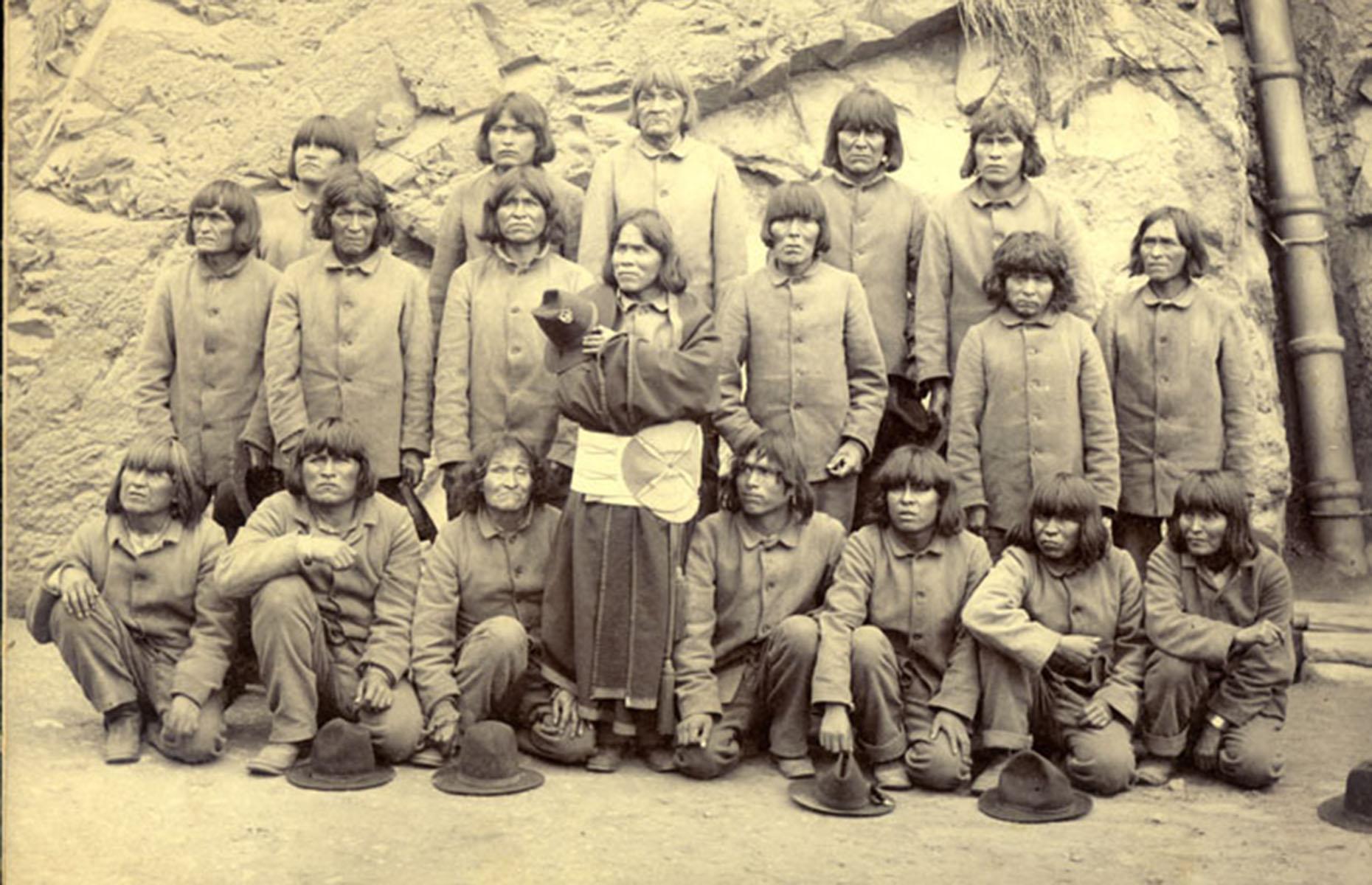
The Hopi 19 are held at Alcatraz
Perhaps the best-known of the fort's prisoners during these early years were the Hopi 19. This group of 19 men from the Indigenous Hopi tribe – who lived in modern-day Arizona – were incarcerated in 1895 after they resisted the government's plans to send their children to boarding schools designed to assimilate them into Euro-American culture. At these schools, students were given new names and kept away from their parents, while Indigenous languages and ceremonies were forbidden and ignored.
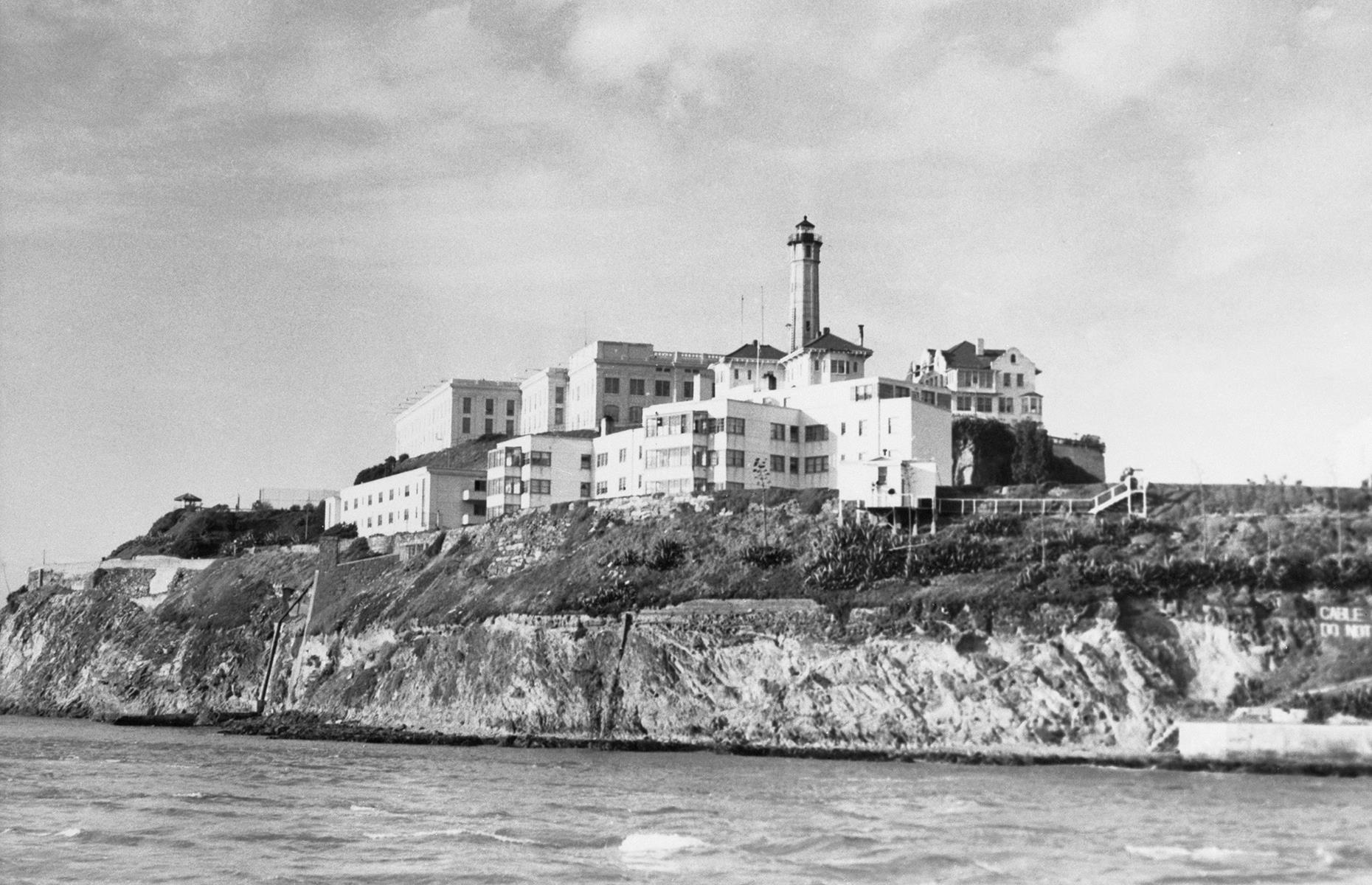
The prison expands
As the decades pushed on, the fort's older weaponry – mounted cannons and antiquated rifles – became obsolete, and in 1907 Alcatraz was officially designated 'Pacific Branch, US Military Prison'. It was already a prison in all but name – the Spanish-American War in 1898 had seen its prison population expand from 25 to 461 – and was expanding rapidly. A giant new cellhouse with 600 individual cells, each with a toilet and electricity, was completed in 1912. At the time it was the largest reinforced concrete building in the world.
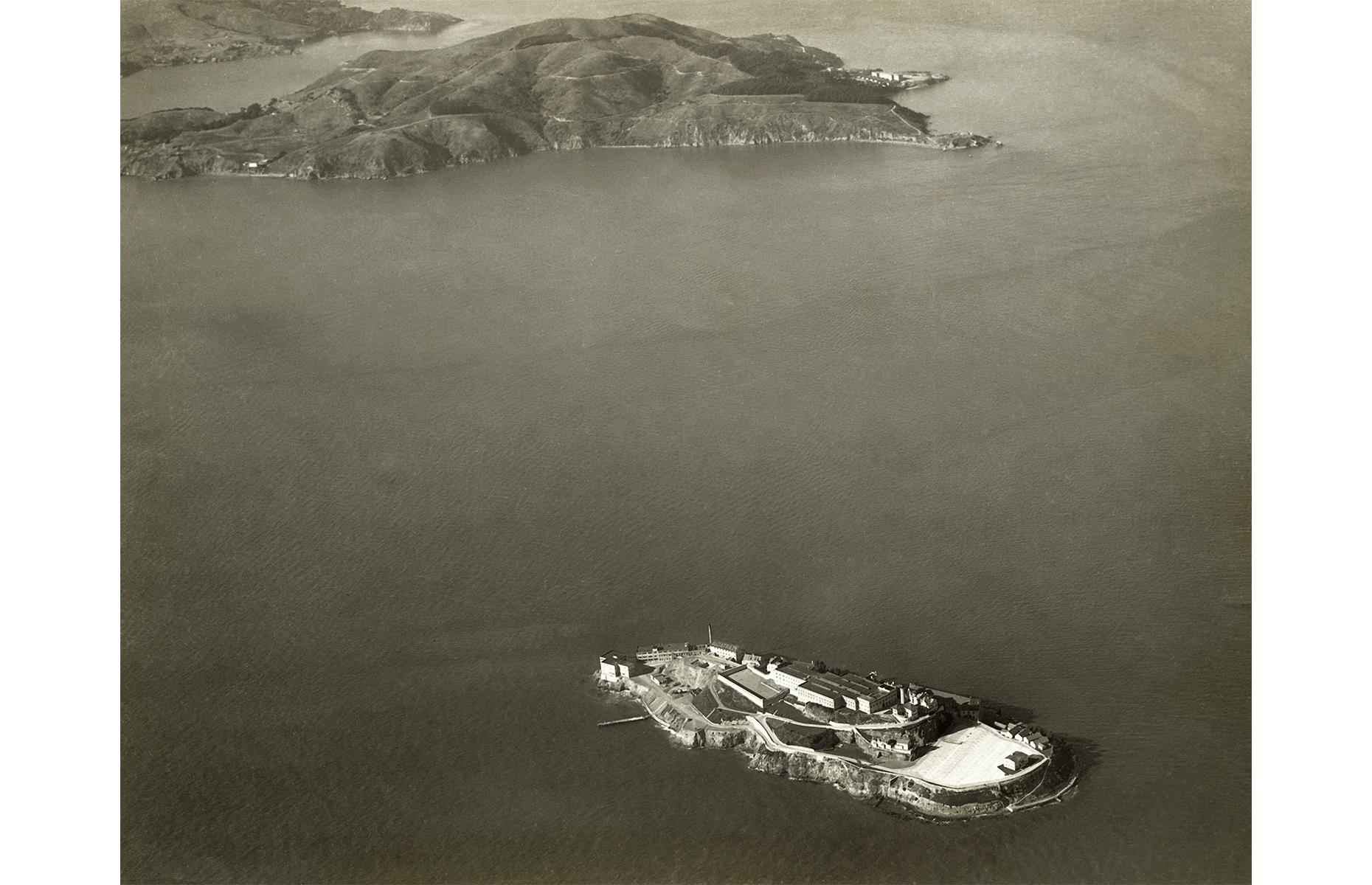
Alcatraz is selected as a federal prison
In the 1930s America was grappling with Prohibition and the Great Depression and, against a backdrop of widespread organised crime, the US government decided that they were in need of a new and formidable federal prison. Alcatraz, with its remote location and robust complex of buildings and facilities, would be the perfect place to incarcerate the most dangerous criminals in America.
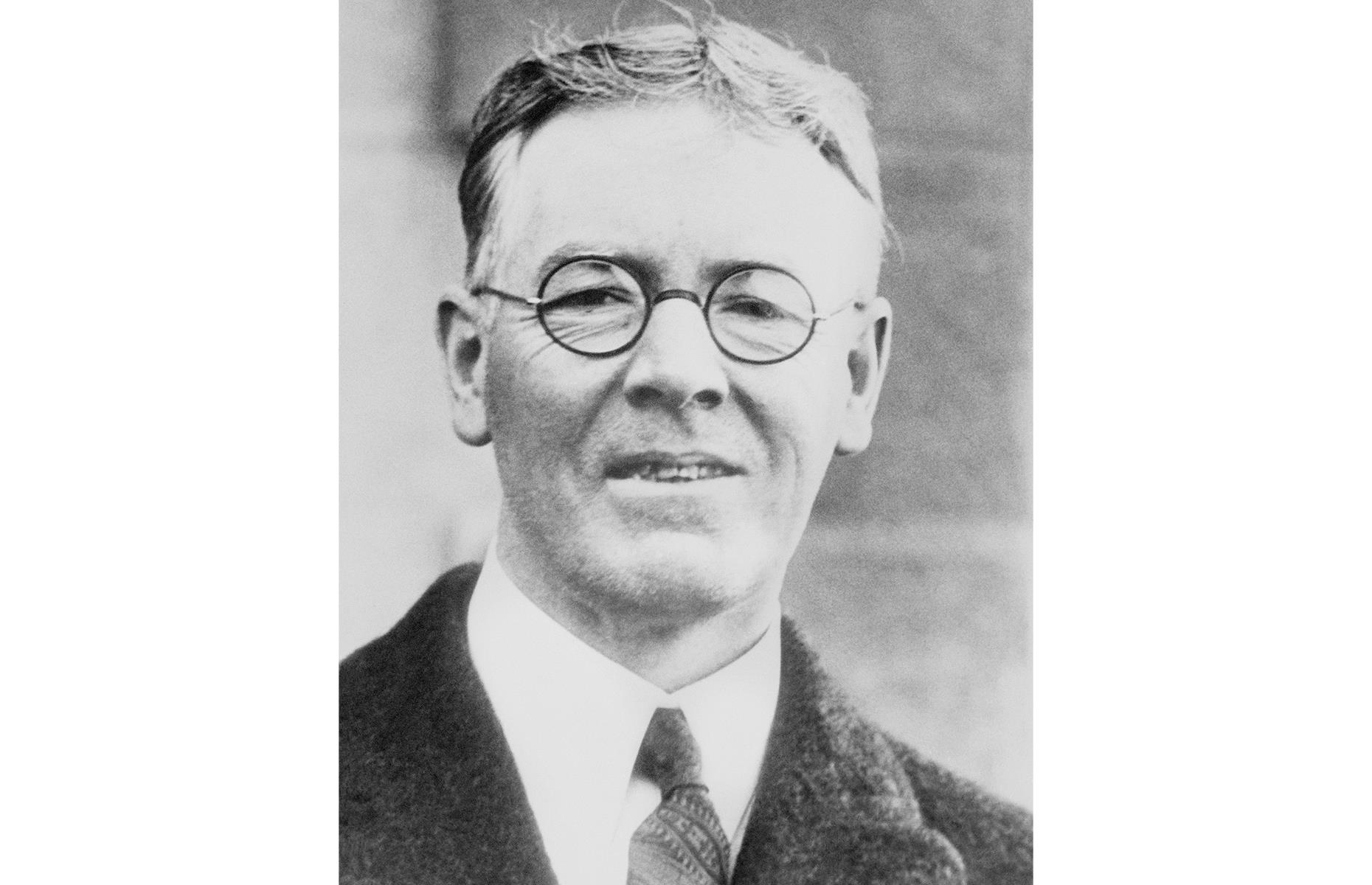
James A Johnston is named the first prison warden
The first warden for one of the toughest prisons in America would be a job few could manage – and the task was given to James A Johnston (pictured), a former prison administrator and entrepreneur with more than a decade of experience in the prison system. He had already served as warden at California state prisons Folsom and San Quentin, and would helm Alcatraz for 14 years.
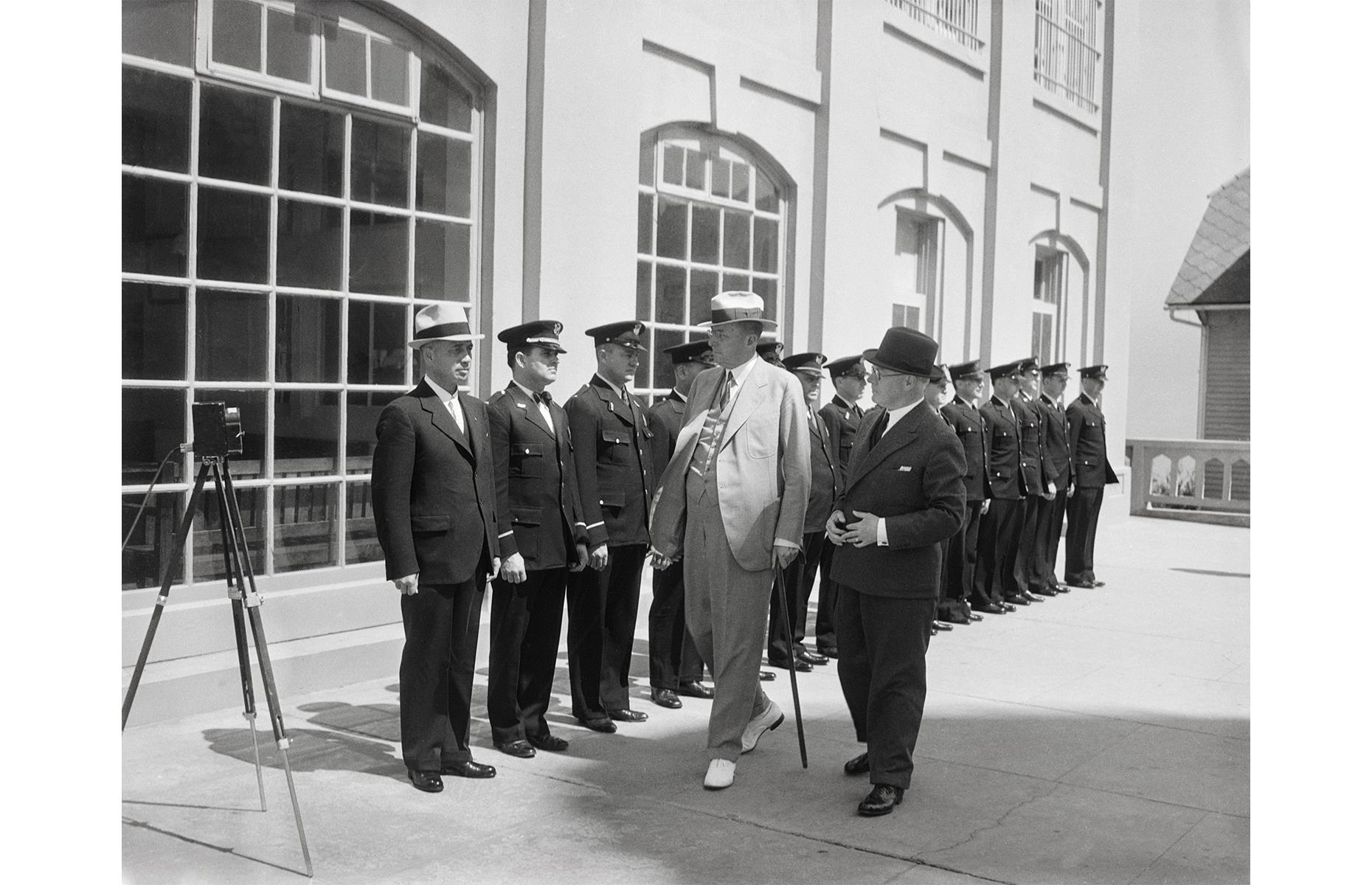
Alcatraz was to be a different kind of prison
Alcatraz was to be a new kind of prison for hard-to-manage prisoners, one that was built around silence and segregation. Inmates were only permitted to speak to one another during mealtimes or recreation and, in dreaded D Block, prisoners were kept in full solitary confinement. Prisoners were entitled to food, clothing, shelter and medical care, and all other privileges, like visits from family members or access to the prison library, had to be earned with good behaviour. Here, Johnston and Attorney General Homer Cummings carry out an inspection.

Prisoners arrive at Alcatraz
Alcatraz opened as a federal prison in 1934 and the first new inmates arrived by boat in August, ready to join a few dozen military prisoners left over from the island's army days. Some 137 prisoners initially docked at the prison, most of them bank robbers or murderers. They walked onto the island in heavy handcuffs and shackles, ready to live out their days in isolation.
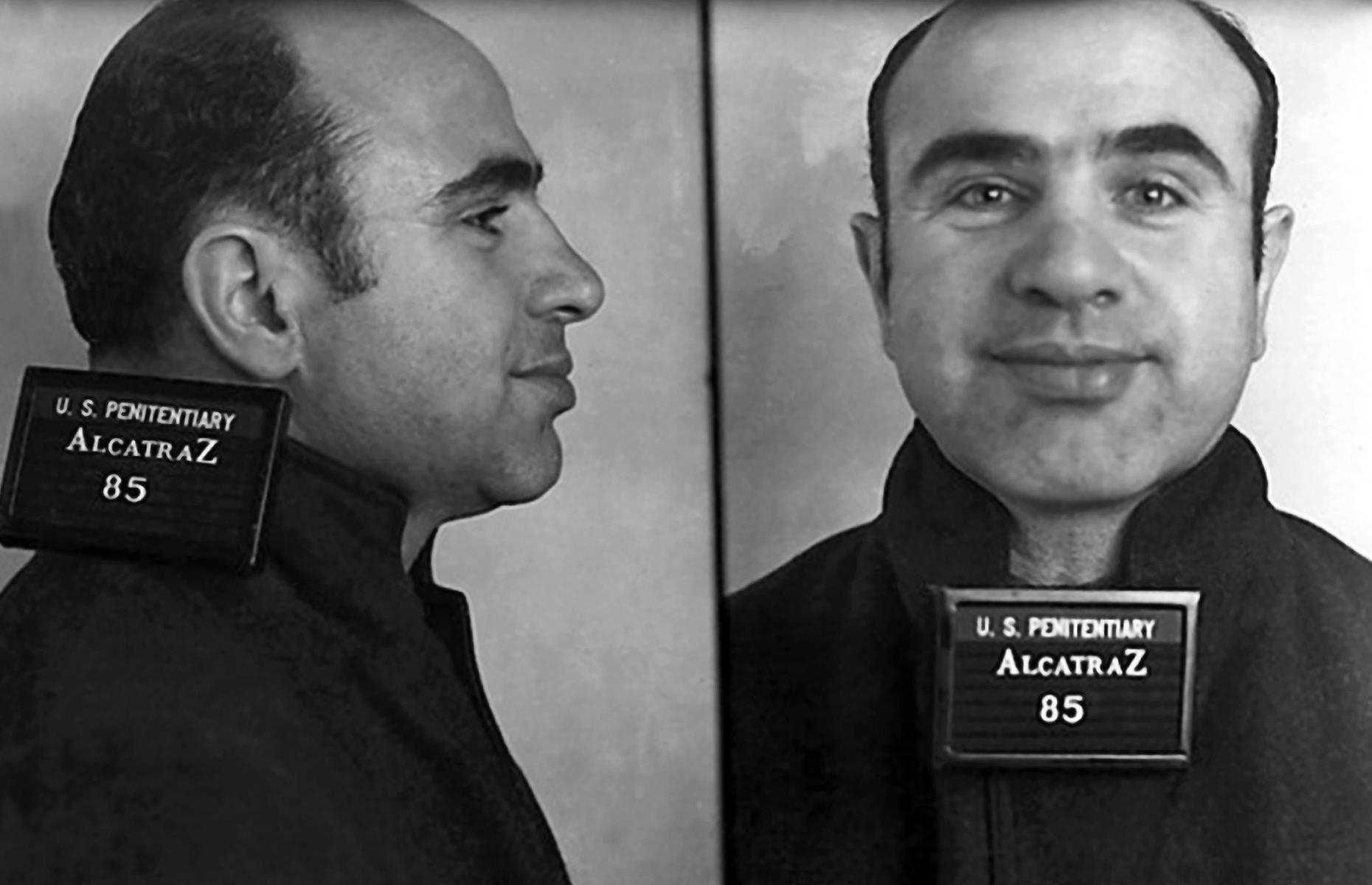
Al Capone is perhaps the prison's most famous inmate
Of all the formidable prisoners confined at Alcatraz, perhaps no one is more famous than Al Capone. The Chicago gangster's criminal pedigree was seemingly endless – bootlegging, gambling, robbery, murder and more – and for seven years he controlled one of America's deadliest and most influential crime rings. He was first arrested in 1929 in Philadelphia for carrying a concealed weapon, but was released from prison just nine months later for good behaviour.

Al Capone begins his term at Alcatraz
It was in 1931 that Al Capone was finally sentenced to 11 years in federal prison, after he was indicted for 22 counts of tax evasion and conspiracy to violate Prohibition laws. He began his jail time in Atlanta, but was transferred to Alcatraz when it opened. This barge – fitted with barred, screened windows and swarming with armed guards – carried the mobster onto the island in the summer of 1934.
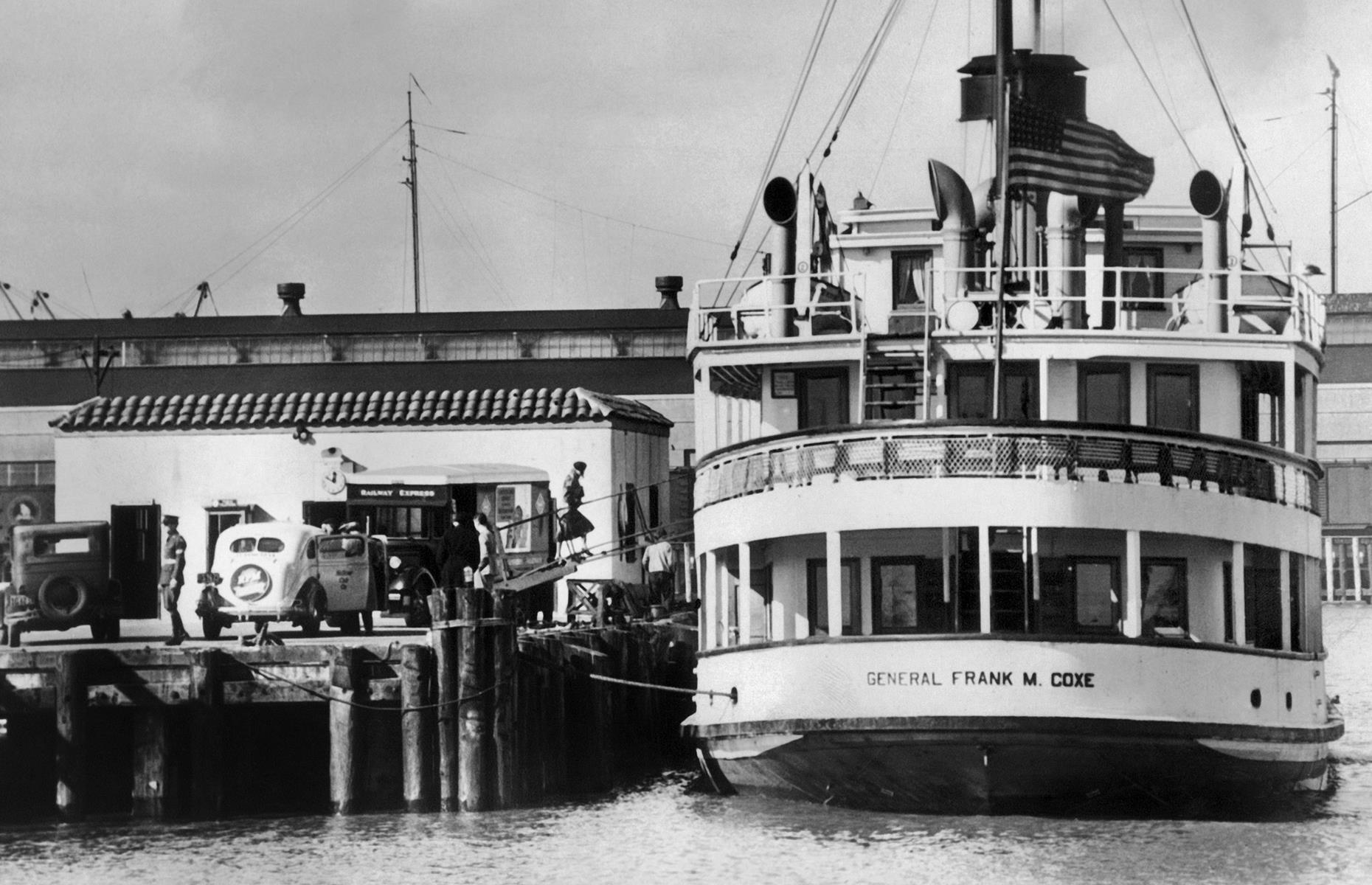
Alcatraz takes a toll on Capone
During his other stints in prison, Al Capone the celebrity was used to getting special treatment, with spacious cells and extra telephone and visiting privileges. At Alcatraz he was merely Prisoner 85. He was assigned to a cramped cell like other inmates and made to carry out the same prison chores and hard labour. This photograph shows Capone's wife Mae arriving at the prison in 1938, by which time he was in clear mental decline.

More famous inmates: Robert Stroud
Another of Alcatraz's most famous inmates was Robert Stroud, also known as 'the Birdman of Alcatraz', who spent 54 years behind bars. His first known murder was in 1909 when he was acting as a pimp in the Alaskan state capital of Juneau, and killed a bartender who had allegedly failed to pay up. His life was characterised by violence, and he was given life without parole – commuted from the death sentence – after he stabbed a prison guard to death in Leavenworth, Kansas.
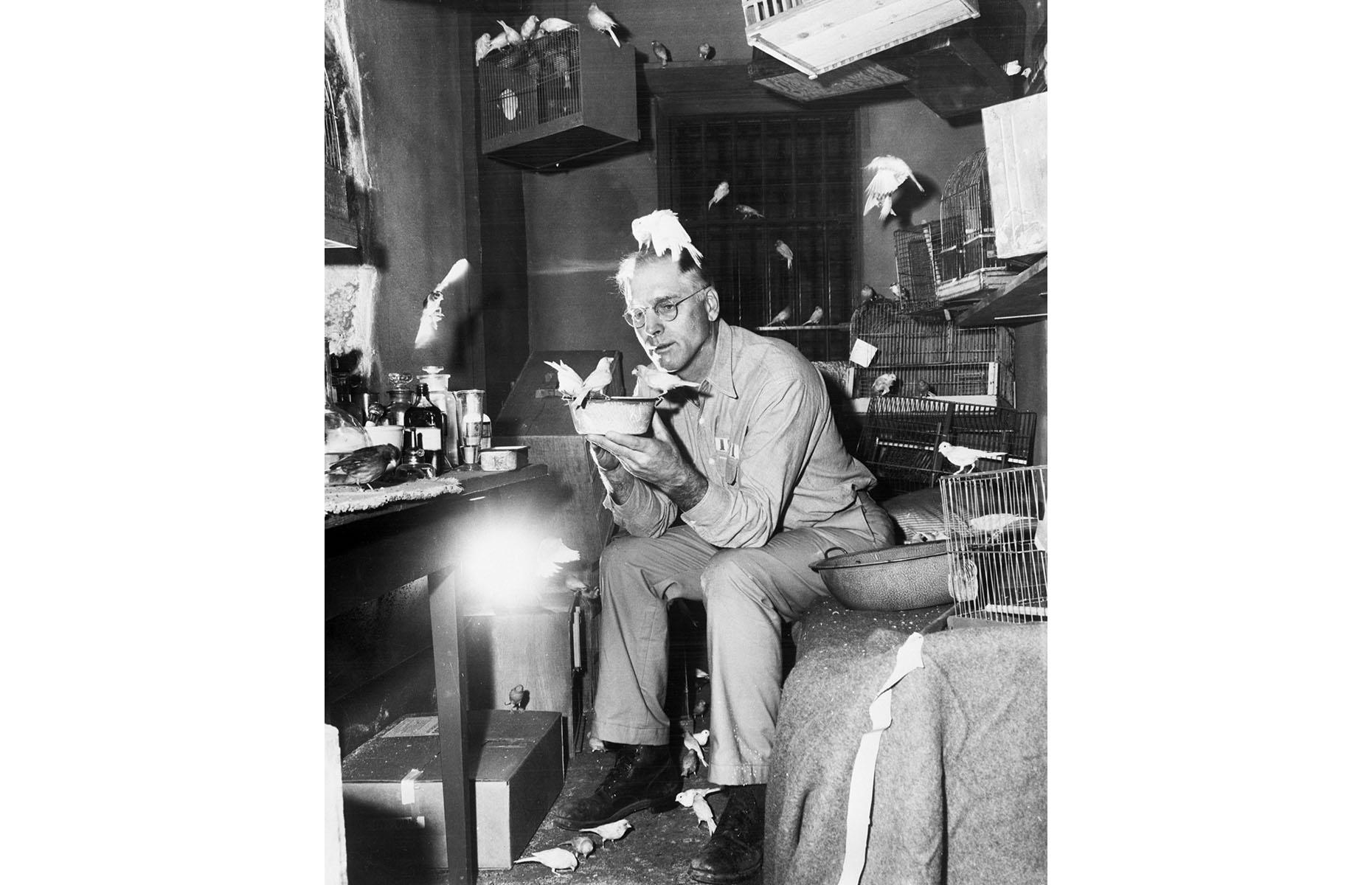
More famous inmates: Robert Stroud
Stroud used his years at Leavenworth to become a self-taught and apparently excellent ornithologist, keeping, breeding and studying birds and writing two books about canaries and their diseases. But when he came to Alcatraz in 1942 he had to leave all his birds and equipment behind. In this photograph, he's being portrayed by actor Burt Lancaster in the 1962 film The Birdman of Alcatraz – although some of Stroud's fellow inmates took issue with the film's grandfatherly portrayal. He eventually died in 1963.
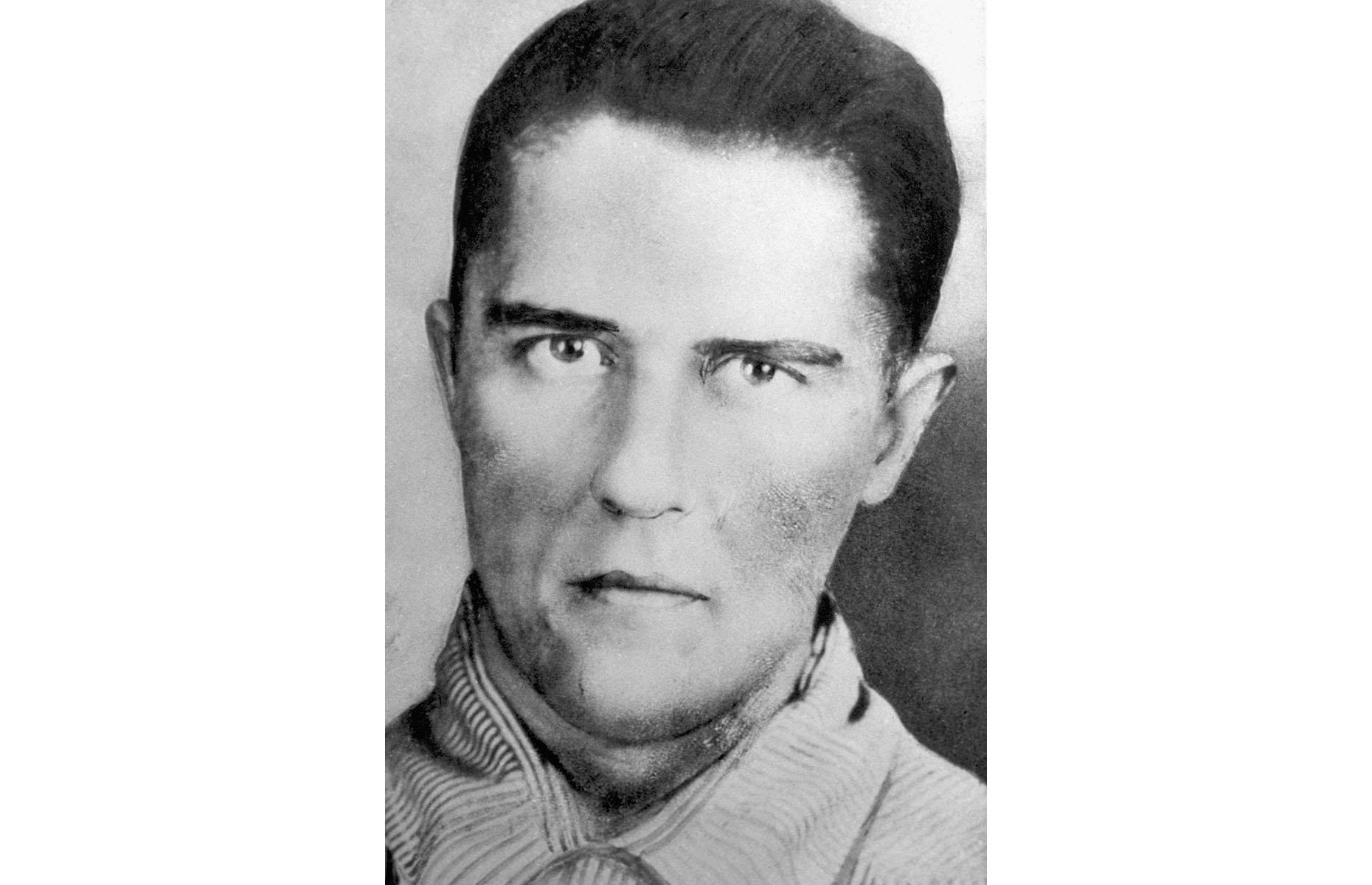
More famous inmates: Alvin 'Creepy' Karpis
Alvin Karpis is another notorious criminal who served time at Alcatraz. The Canadian-American became involved in crime as early as 10 years old, and his criminal career peaked with his involvement in the notorious Karpis-Barker gang through 1930s. Their deeds included bank robbing, kidnapping and murder, and Karpis was ultimately captured and sentenced to life imprisonment at Alcatraz from 1936. He was the last so-called 'public enemy number one' taken down by police, a spot previously occupied by 'Baby Face' Nelson and 'Pretty Boy' Floyd.
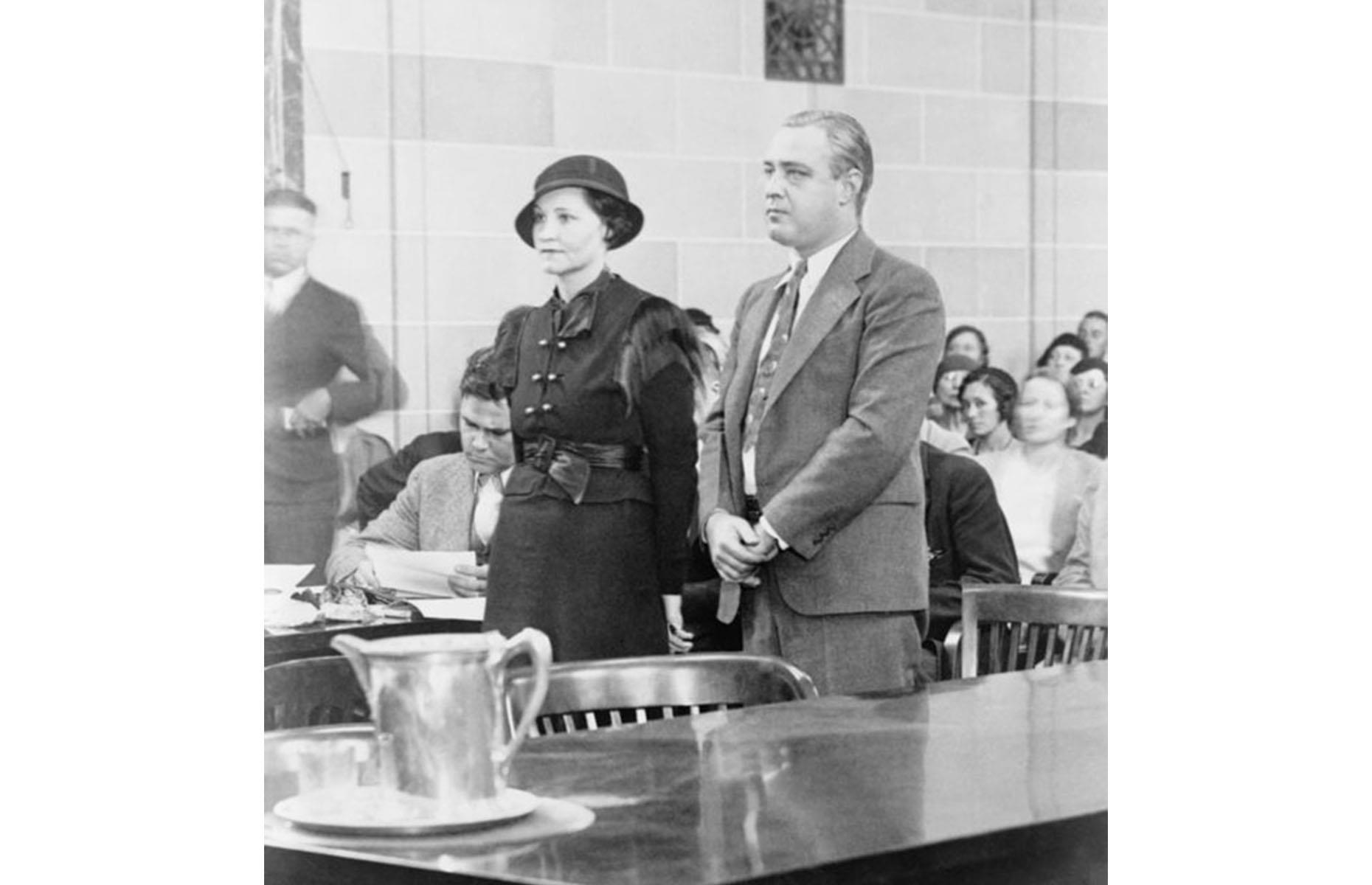
More famous inmates: Machine Gun Kelly
The brutal reputation of George 'Machine Gun' Kelly precedes him, with his nickname stemming from his weapon of choice. Like many of America's best-known mobsters, he was active during the Prohibition years and was involved in bootlegging operations, though he is most remembered for kidnapping Oklahoma City oil magnate Charles F Urschel and his friend Walter R Jarrett. Along with his wife (pictured left), he was sentenced for the kidnapping in 1933 and arrived at Alcatraz in 1934.
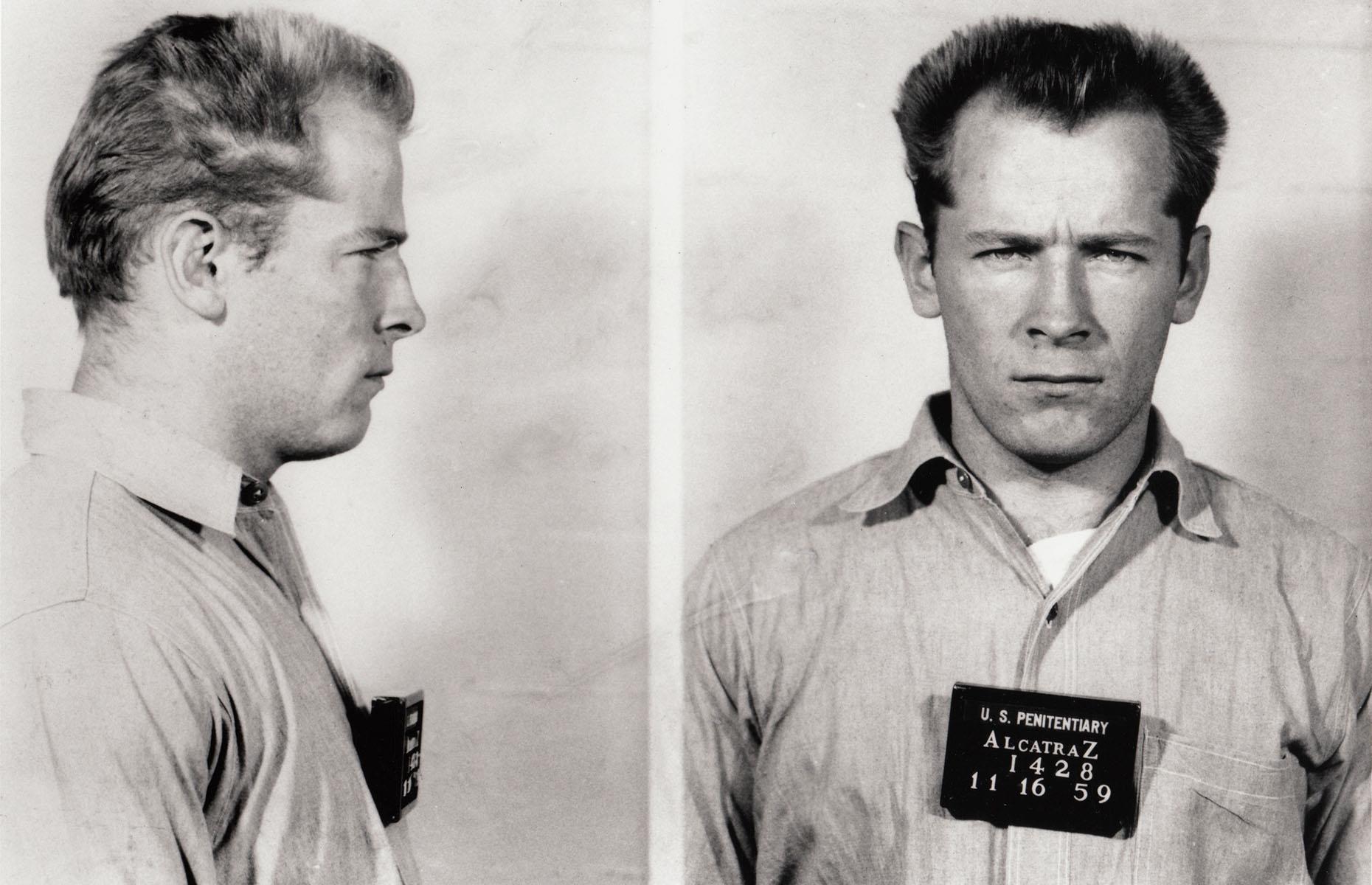
More famous inmates: James 'Whitey' Bulger
One of the more recent criminals to arrive on Alcatraz's shores, James 'Whitey' Bulger only died in 2018. He was a notorious organised crime boss who led the Boston-area Winter Hill Gang, and had reportedly also been a high-level FBI informant starting in the mid-1970s. He spent a brief period in Alcatraz starting in 1959, but was later out of prison for 46 years. When he was eventually arrested again in 2011, the charges included 19 murders.
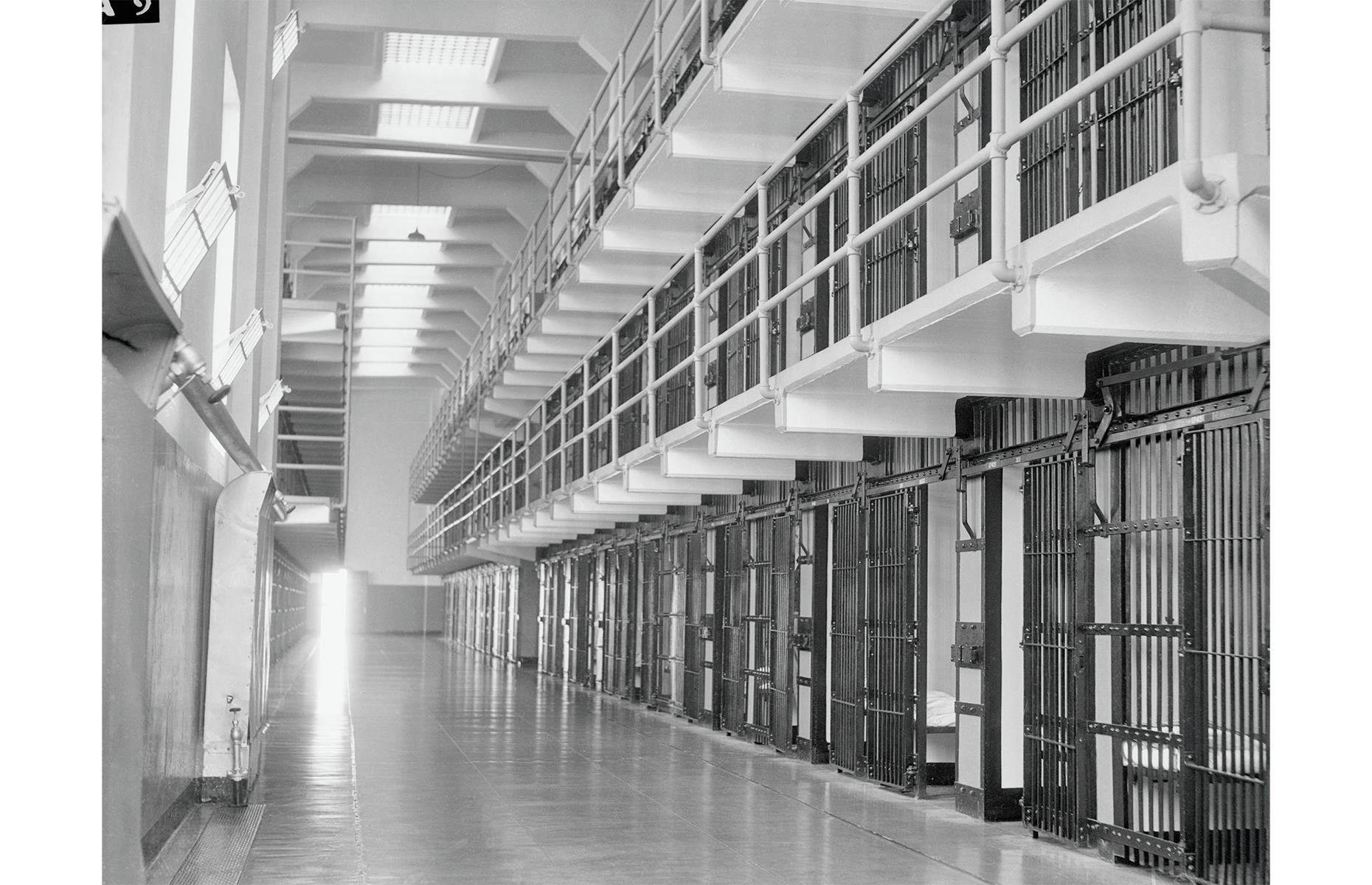
Conditions at Alcatraz are tough
A stint at Alcatraz was certainly no walk in the park, even for America's most hardened criminals. Hard labour was common and so was solitary confinement. Most cells were incredibly small – around five feet by nine feet (1.5m by 2.7m) – with only cold water. The most fearsome prisoners were also made to stay in their cells for 24 hours a day.
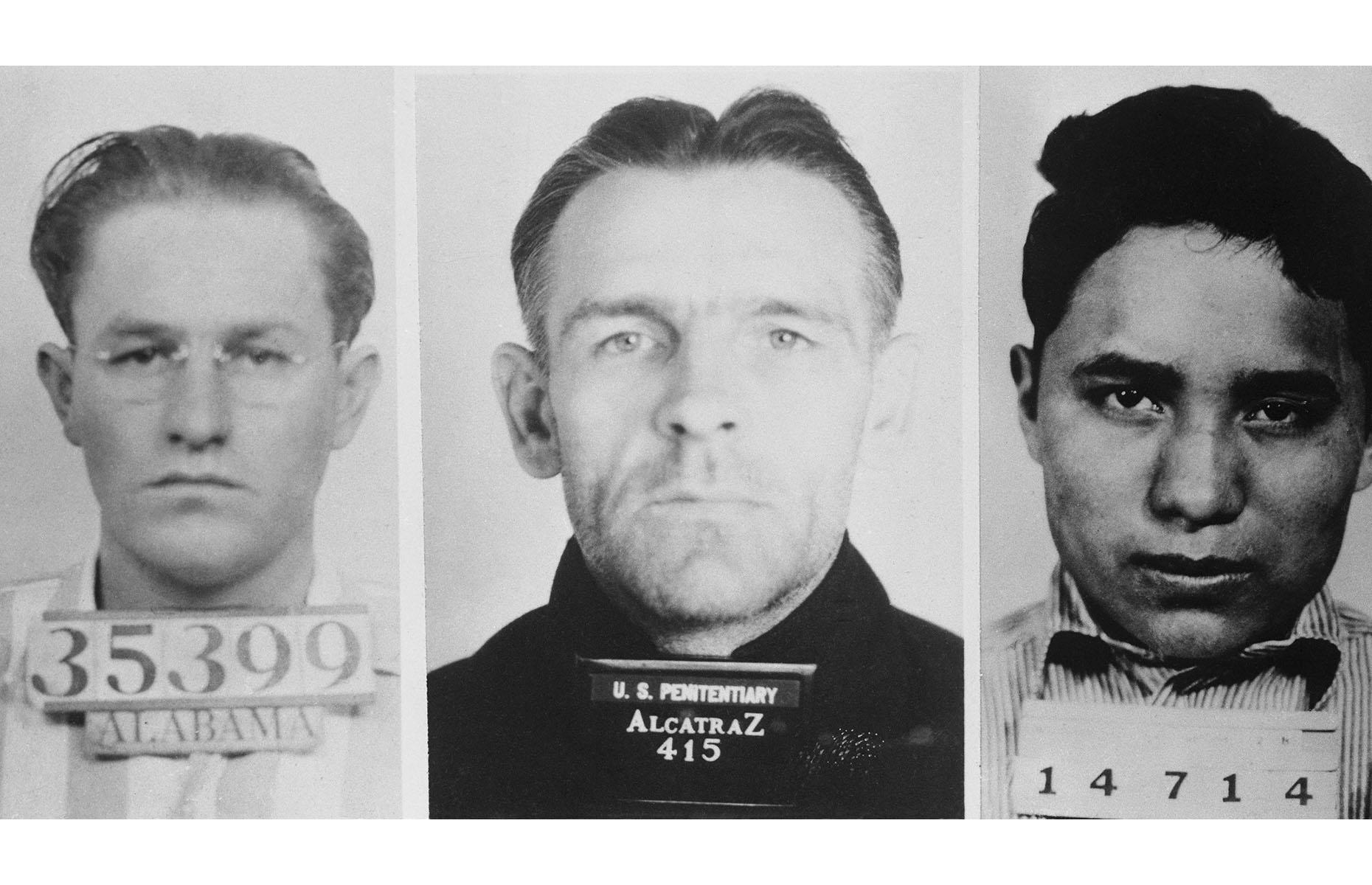
The 'Battle of Alcatraz' is the prison's most precarious moment
Perhaps unsurprisingly, given the harsh conditions, escape attempts were not uncommon at Alcatraz – though there was never a proven success. Five 'escaped' inmates remain unaccounted for, but it's assumed that they were lost to the waves. Perhaps the most notorious attempt of all became known as the 'Battle of Alcatraz', and was engineered by prisoners Marvin Hubbard, Bernard Coy (the ringleader) and the youngest convict ever sent to Alcatraz, Clarence Carnes (pictured left to right).
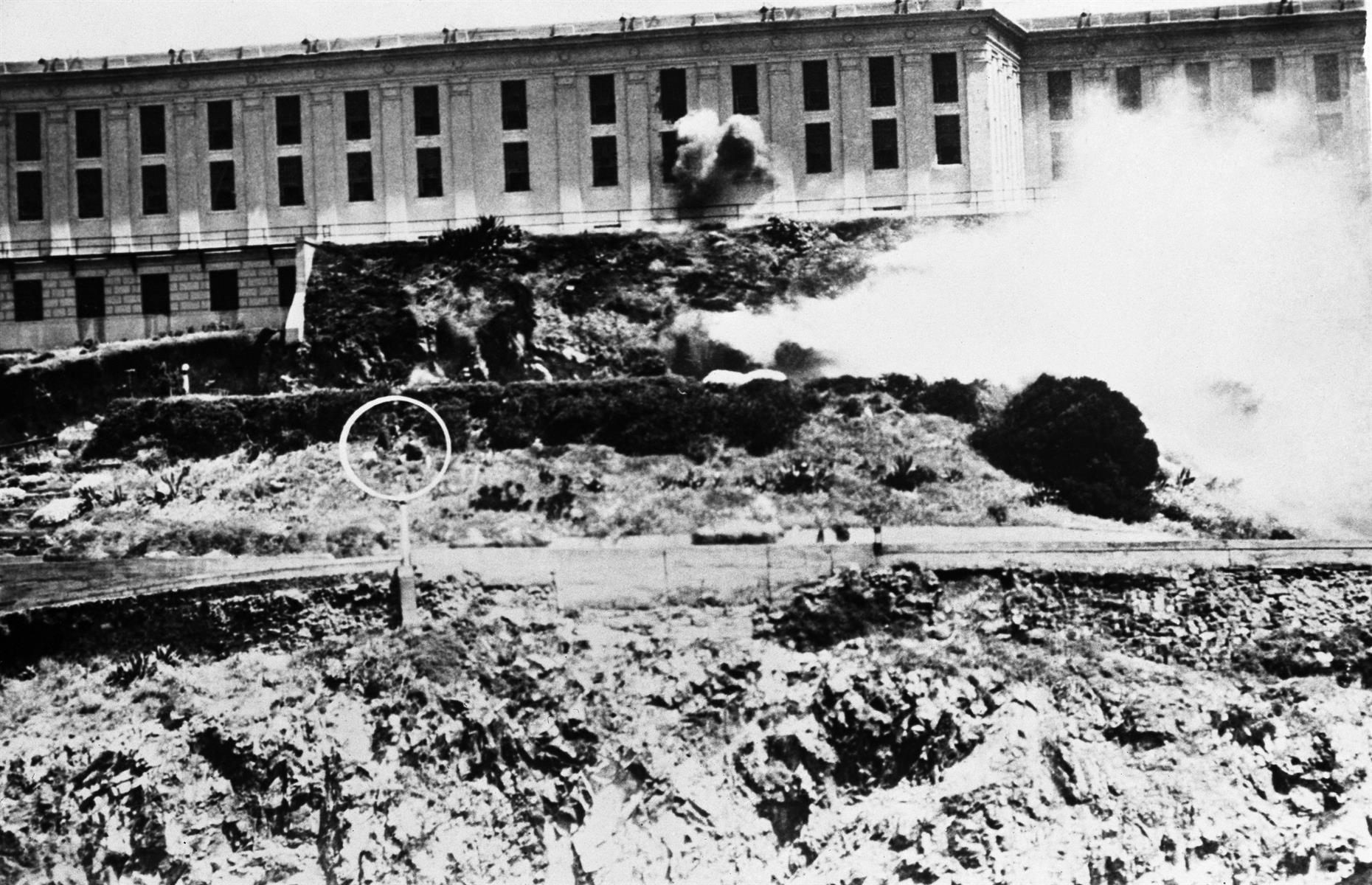
The battle claims several lives
Coy worked as a cell-block orderly – a job that allowed him a high degree of freedom – and after studying the routines of the prison guards at length, he hatched a plan. He deliberately lost weight so he could squeeze through the bars of the gun gallery, and while Hubbard distracted the guard he launched an attack. The men released several other prisoners and what ensued was a bloody, 48-hour standoff between inmates and prison staff, who were joined by military and police. Ultimately no prisoners escaped, but five people lost their lives.
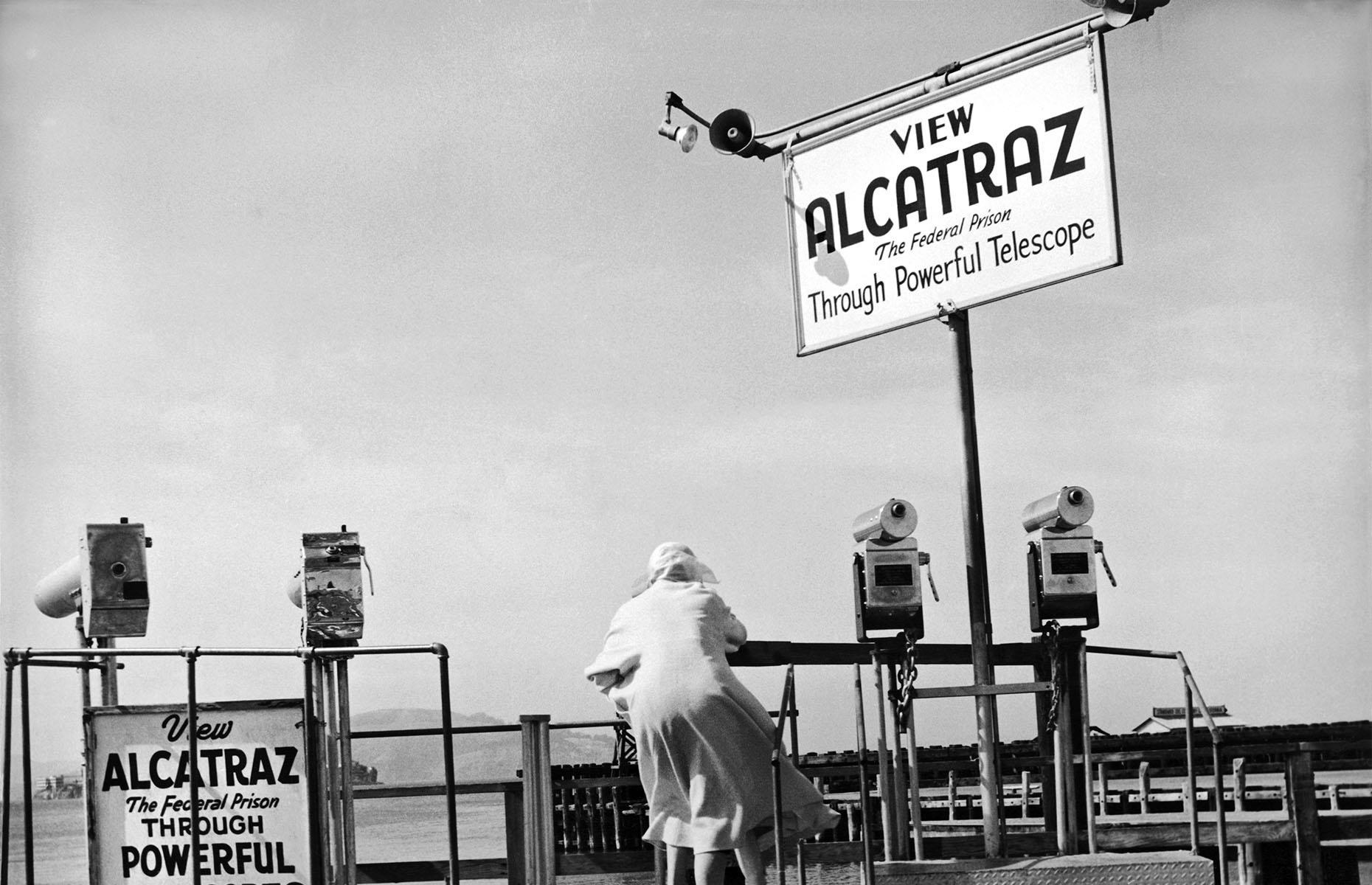
Alcatraz is closed and abandoned
By the middle of the century, declining infrastructure and soaring maintenance costs (Alcatraz was nearly three times more expensive to run than any other federal prison) left the prison island with an uncertain future. Finally, in 1963, Alcatraz was closed as a federal prison and all but abandoned. The remaining prisoners were transferred to a new, high-security jail in Marion, Illinois. Here a curious tourist peers at the famous prison through a telescope.
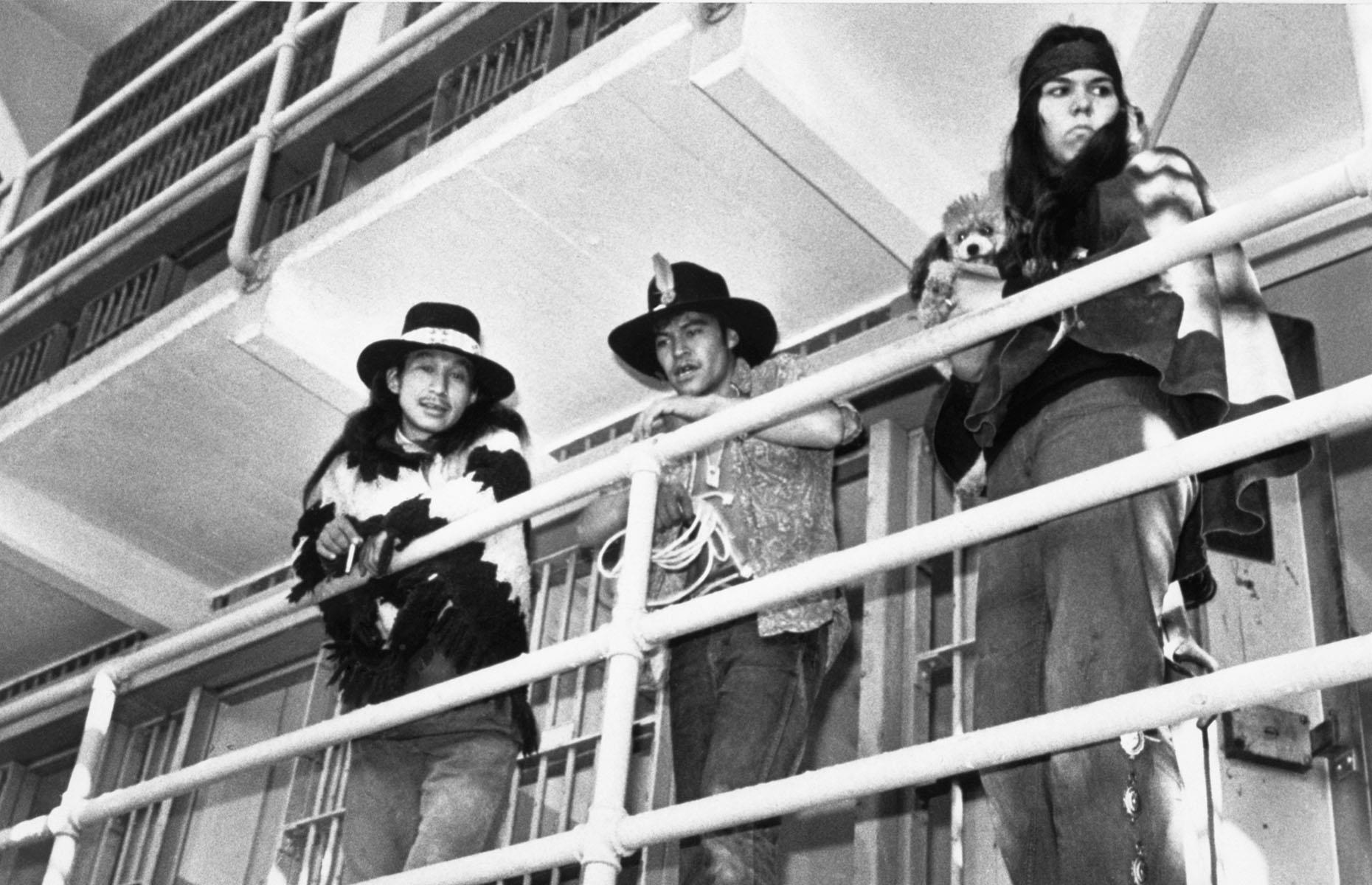
Native Americans occupy Alcatraz Island
After the abandonment of the prison in the 1960s, the site was occupied for 19 months by Native Americans led by Mohawk activist Richard Oakes. The Indigenous people acted as part of a group named 'Indians of All Tribes' and hoped to use the island to establish a Native American cultural centre, university and museum. However, Oakes had to abandon the attempt after a family bereavement, and the remaining occupiers were eventually removed from the island by federal marshals and FBI agents in 1971.
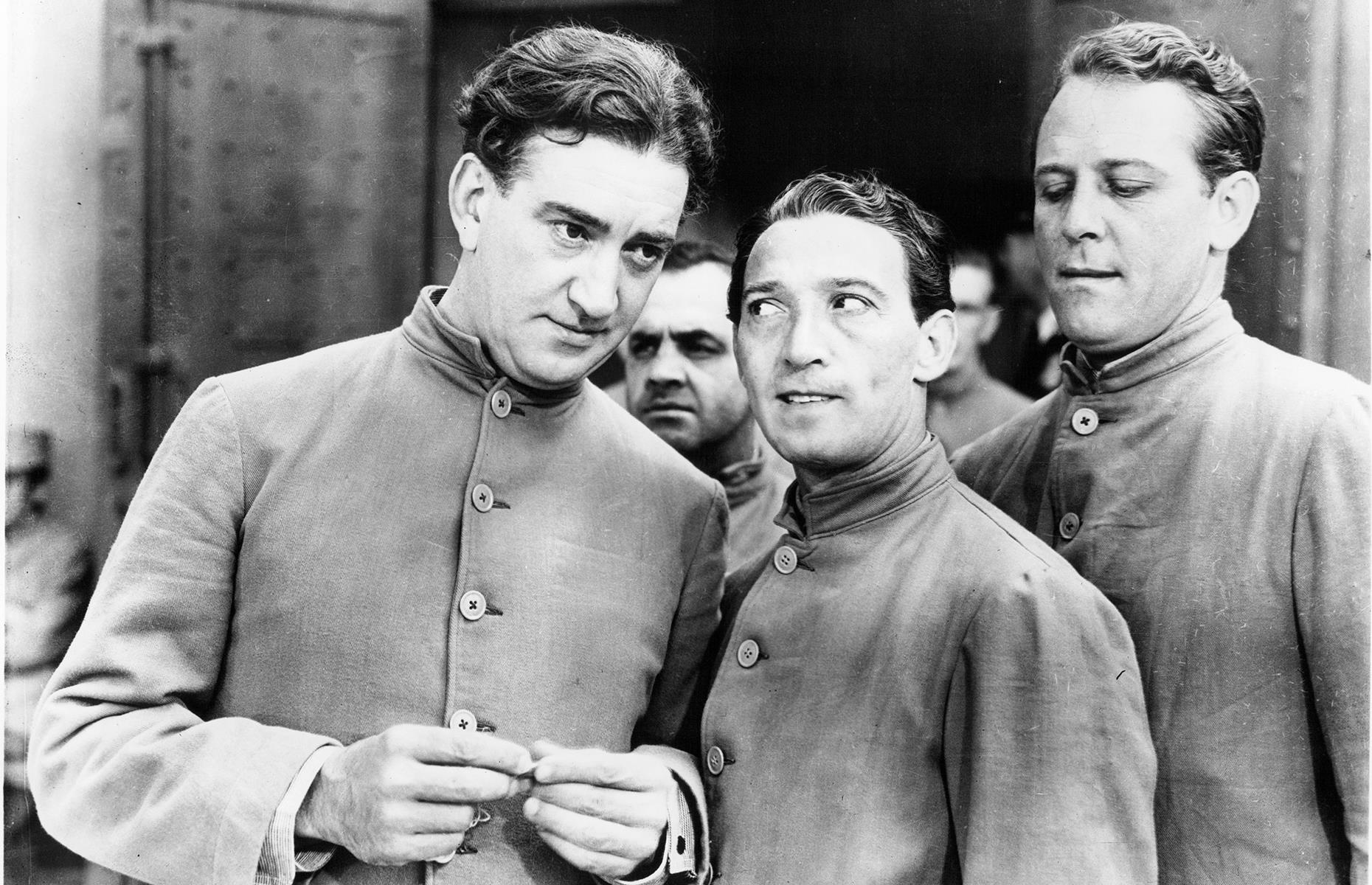
Alcatraz makes it to the big screen
Alcatraz's extreme location, formidable residents and notorious conditions made it perfect fodder for movies throughout the 20th century – and directors were captivated by the prison's stories. Notable movies include early flick Alcatraz Island from 1937 (star John Litel is pictured left); 1979 thriller Escape from Alcatraz, starring Clint Eastwood; 1996's The Rock with Sean Connery and Nicolas Cage, which was largely shot on location; and 1967's Point Blank, the very first movie to be filmed on the island.
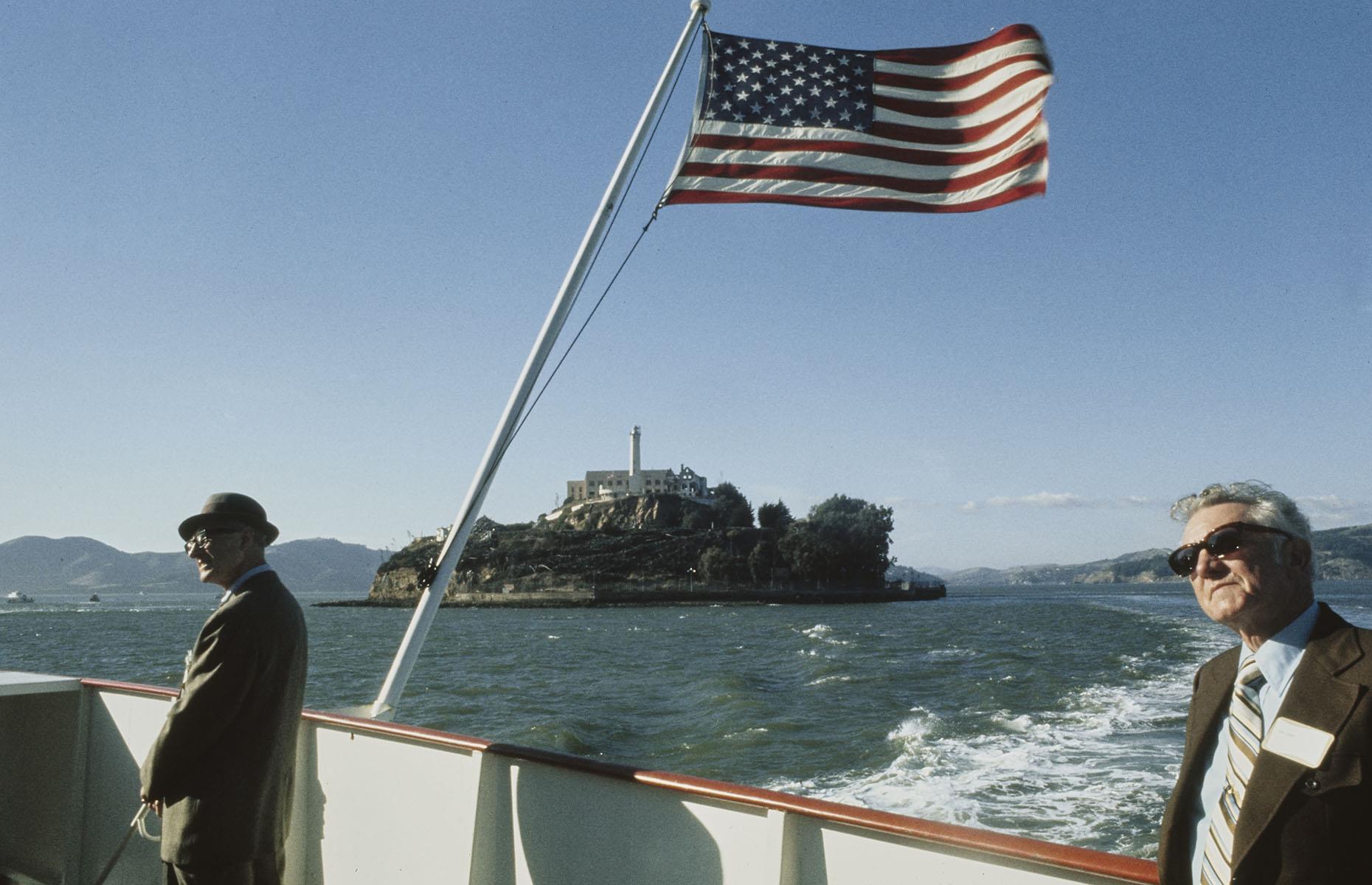
Alcatraz becomes a National Park Service site
Alcatraz eventually came under the control of the National Park Service in the 1970s. It was first enlisted as a National Recreation Area in 1972 and then opened to the public in 1973.
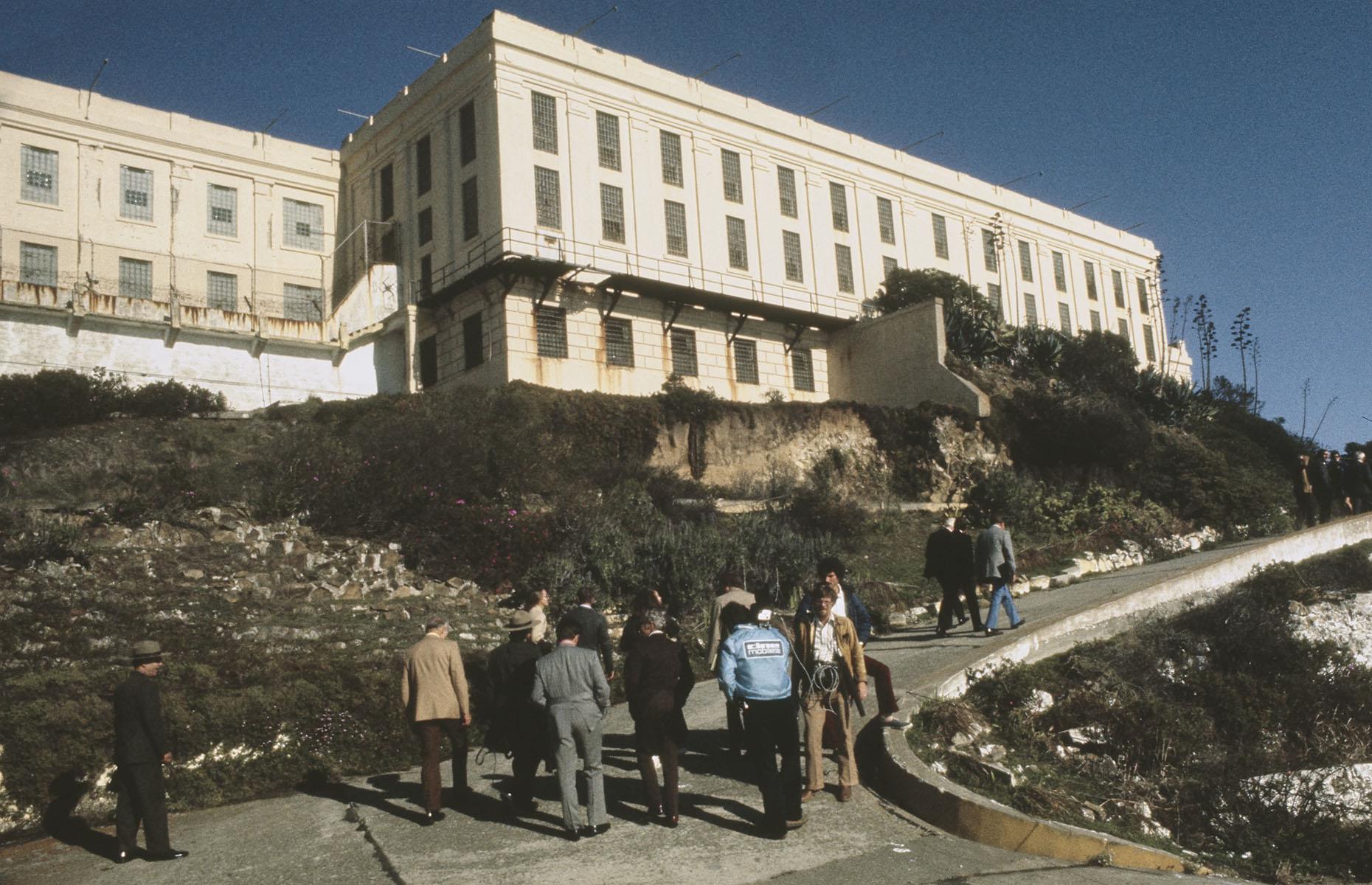
Alcatraz proves to be a popular tourist attraction
The American public had long been fascinated with the high-security prison and the tales of its inmates and escape attempts had long made waves in the American press. Tourism here was a quick success, and the site was soon welcoming thousands of visitors each month. The prison was also listed on the National Register of Historic Places in 1976, and declared a National Historic Landmark in 1986, protecting it for posterity.
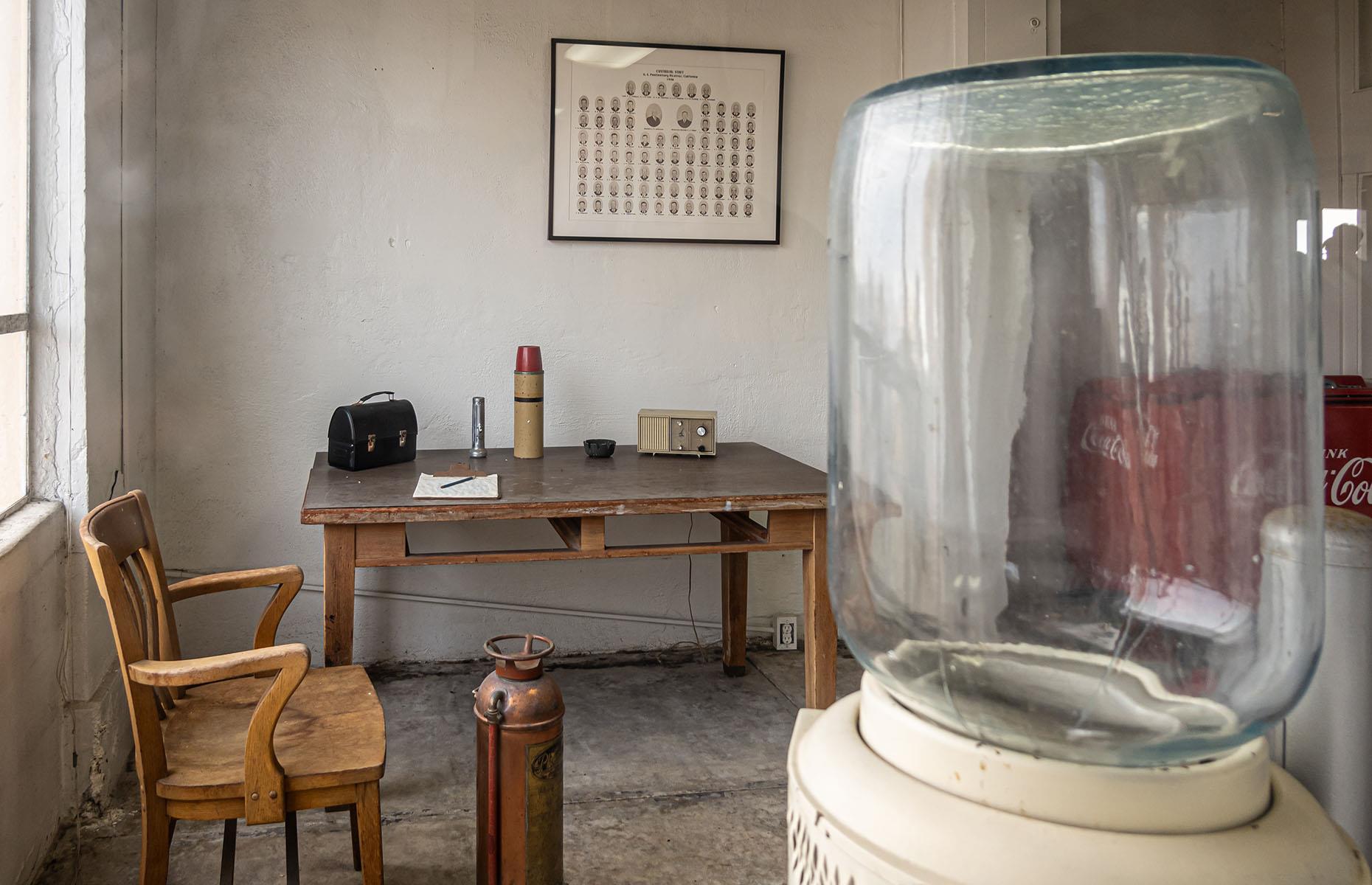
You can explore the prison on a cellhouse tour
Today the NPS site remains one of California's most popular tourist attractions. The Day Tour is a perpetual favourite, taking visitors into the creaking cellhouse while they're regaled with stories from its past. The views over San Francisco Bay are epic too.
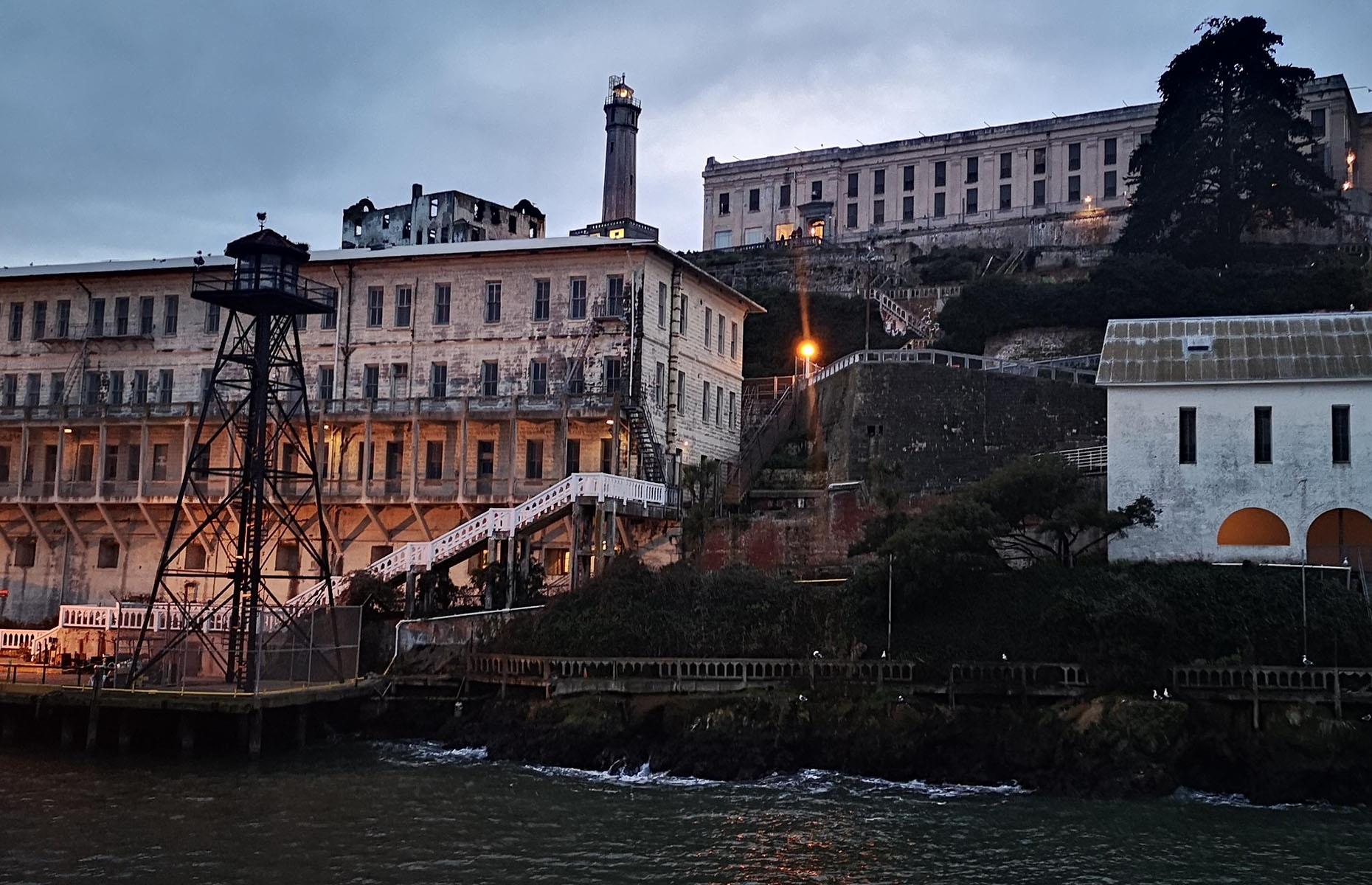
The Night Tour will give you chills
Visitors that get a thrill from things that go bump in the night can book onto the after-dark tour. On the Night Tour, you'll first enjoy a dusky boat ride, before wandering the creepy corridors hearing tales of ghosts and ghouls. Specially programmed tours are sometimes offered after dark too, and they can include extras like glimpses of the hospital or the usually off-limits A Block.
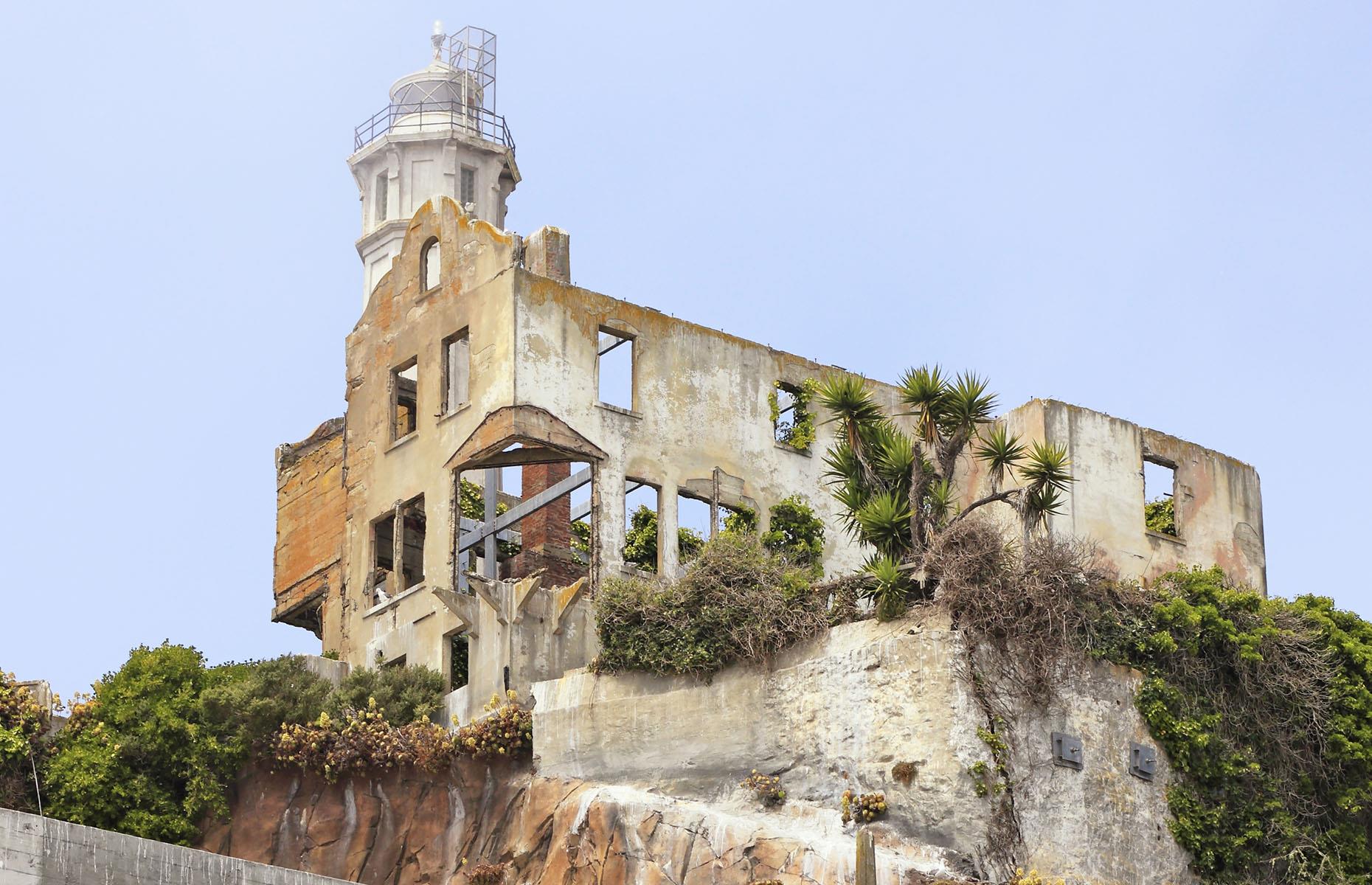
It's purportedly home to spirits and spectres
Given the prison's brutal history, it's no wonder that the facility reportedly offers up a glut of ghosts and apparitions. Particularly haunted places include Cell 14D, where the most troublesome prisoners were kept in total confinement, while visitors report hearing moans and cries throughout the mouldering cell blocks. Another supposed spectre is the Lady in Green, a ghostly woman who apparently frequents the washroom in the one-time home of the former prison warden.
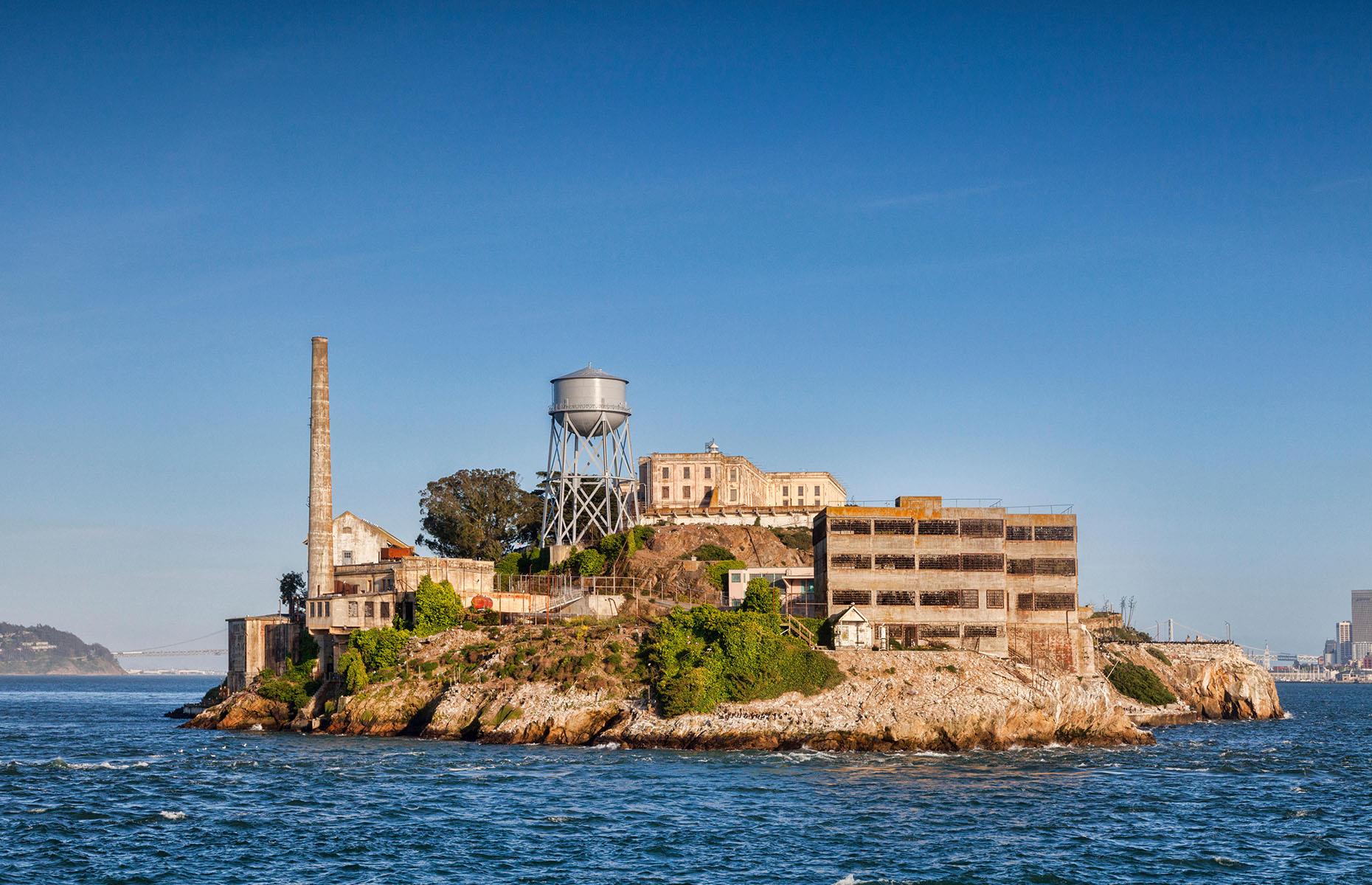
The future of Alcatraz
Today Alcatraz is one of California’s – and the USA’s – most popular tourist attractions, with 1.3 million people visiting in 2022. And, happily, it’s being preserved for the future. Announced in 2022, some $35 million (£27.8m) of federal funds have been set aside to make improvements at the NPS site, including improvements to the island’s concrete wharf and its infamous cellhouse.
Read on to learn the fascinating story of the Hollywood Sign
More for You
25 of the most notoriously awful movies that people secretly love
Ukraine Damages Crimean Bridge, a Key Russian Supply Line, After Moscow Missile Attack Injures Kyiv Residents
If you and your partner use any of these 5 phrases regularly, your relationship is stronger than most
This McDonald's Cult Favorite Menu Item Is Finally Coming Back
6 Cars That Seem Expensive But Rarely Need Repairs
Judge issues gag order barring Donald Trump from commenting on witnesses, others in hush money case
5 best Netflix movies you (probably) haven't watched yet
NATO Considering Shooting Down Russian Missiles
14 Things You Should Never Say to Your Spouse
15 TV, Movie, and Video Game Characters With Origins You'd Never Guess
RFK, Jr 'likely to take Biden votes' as he announces VP pick: Bill McGurn
17 Jobs That Pay Big Bucks Without Needing Experience
Inside ‘the world’s least-visited country’ – where dirty cars are illegal and social media is banned
WuMo by Wulff & Morgenthaler
If You Did These 17 Things in the ’60s & ’70s, You Were a Hippie
9 Players That Could Leave The Bucks In 2024 Offseason
25 stars of major TV shows who were replaced within the first season
All Couples That Last Do These 5 Things, According to a Relationship Coach
House Ethics Committee is investigating Republican Texas Rep. Troy Nehls
Heart of the City by Steenz